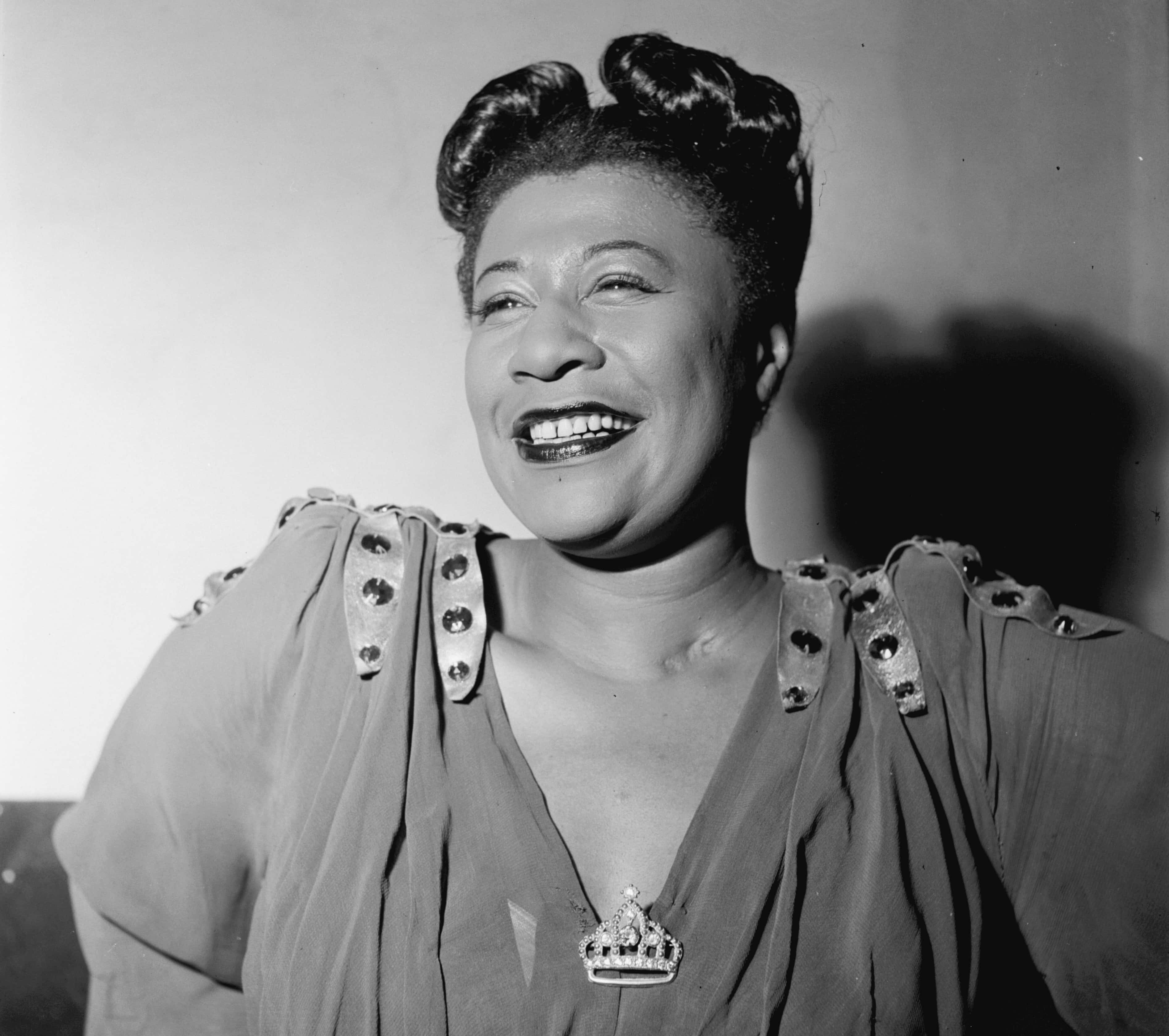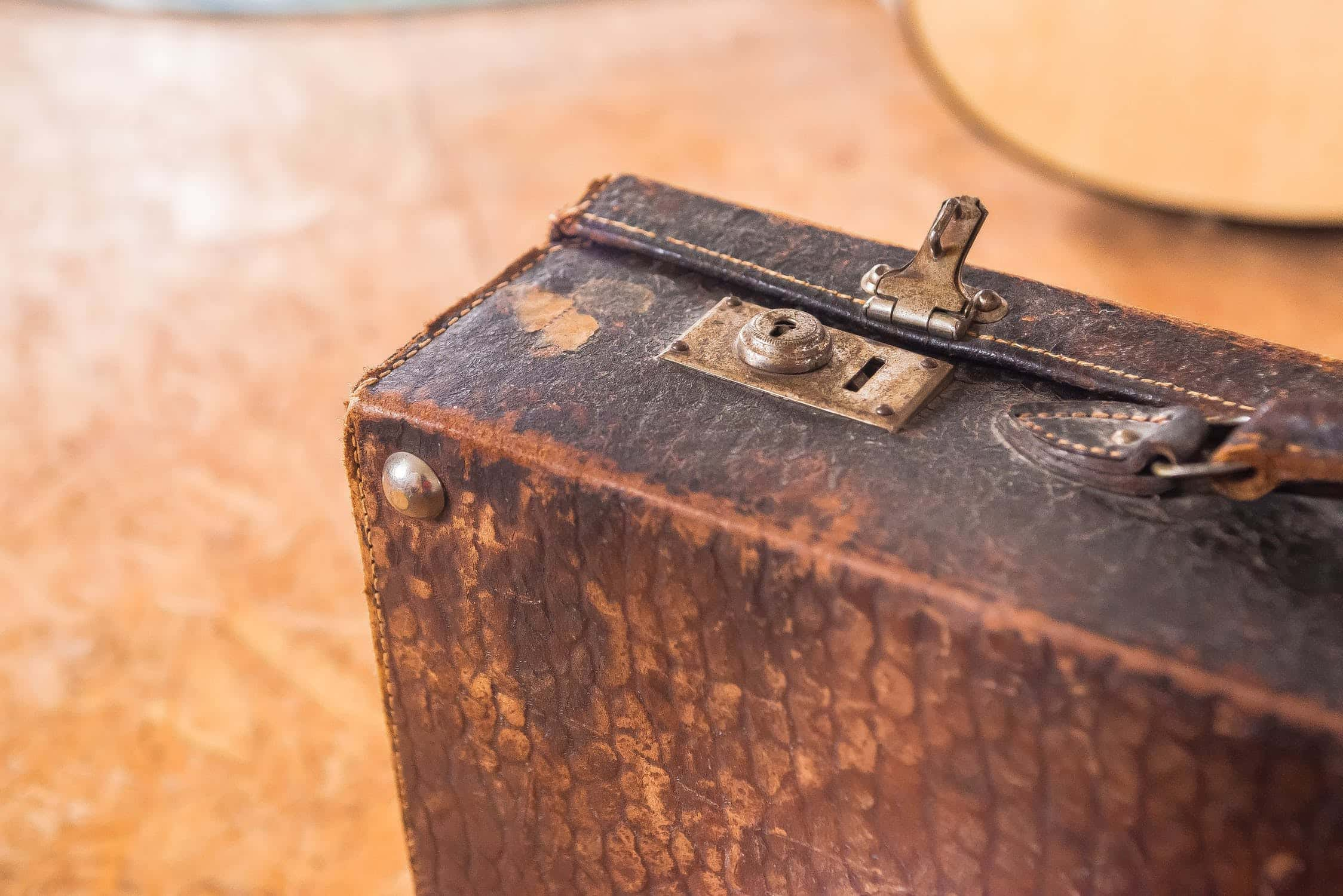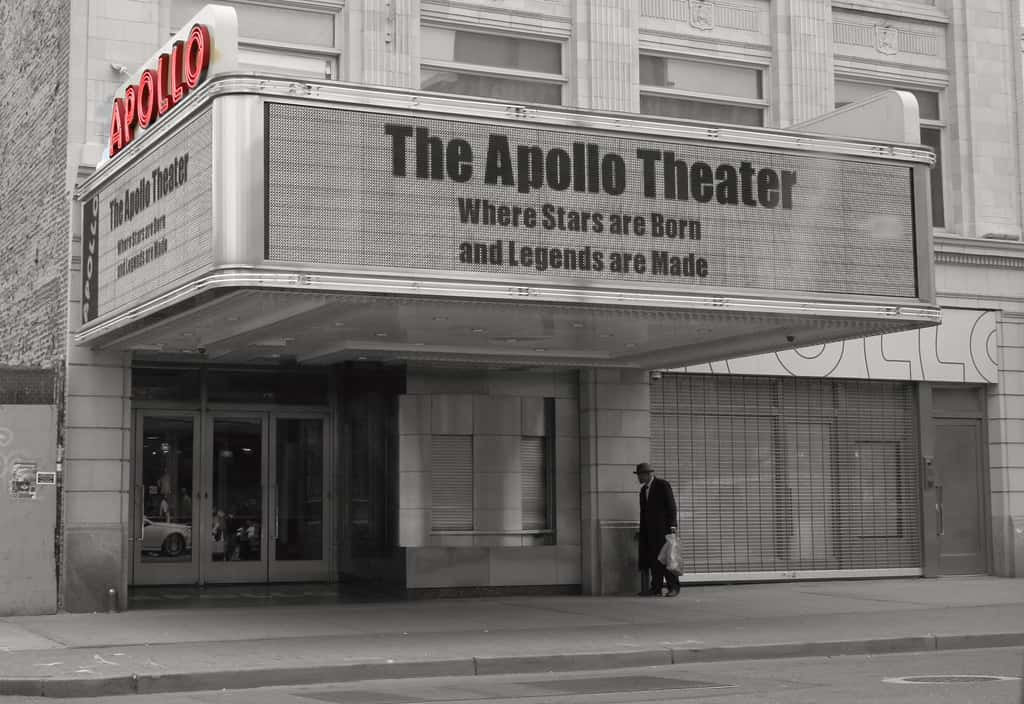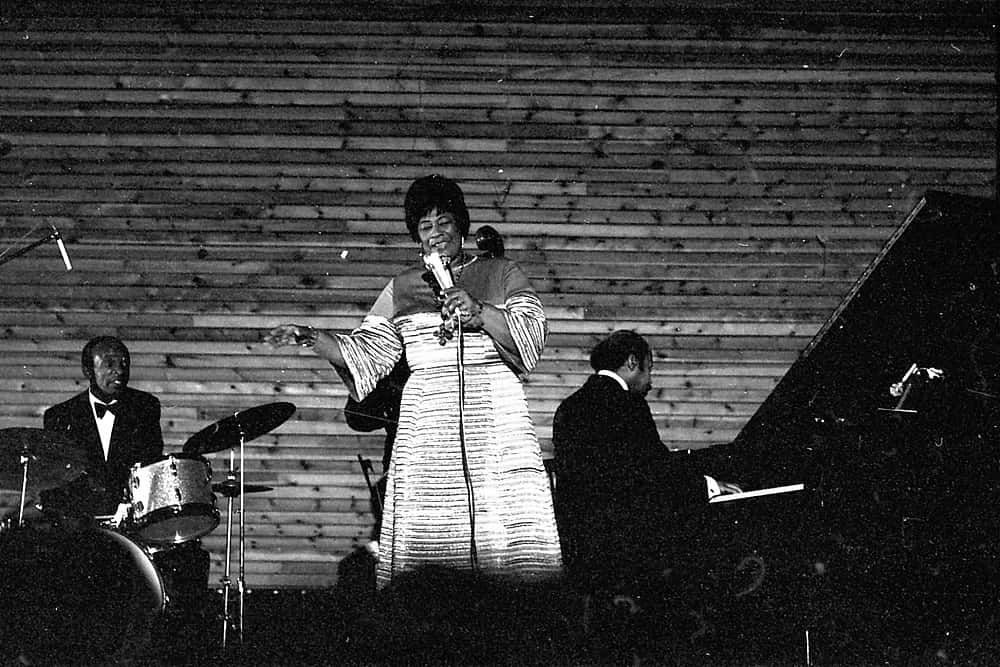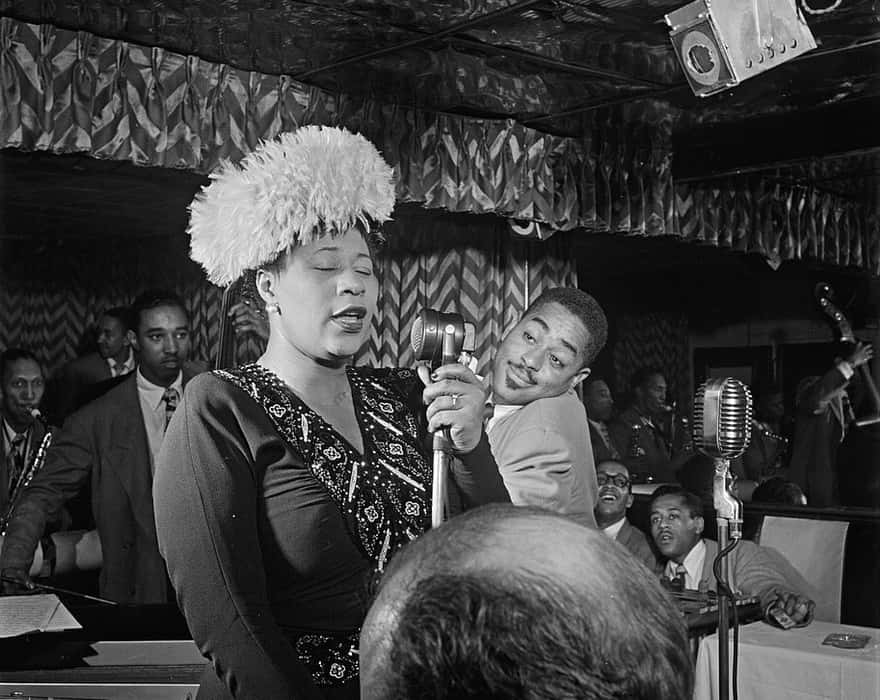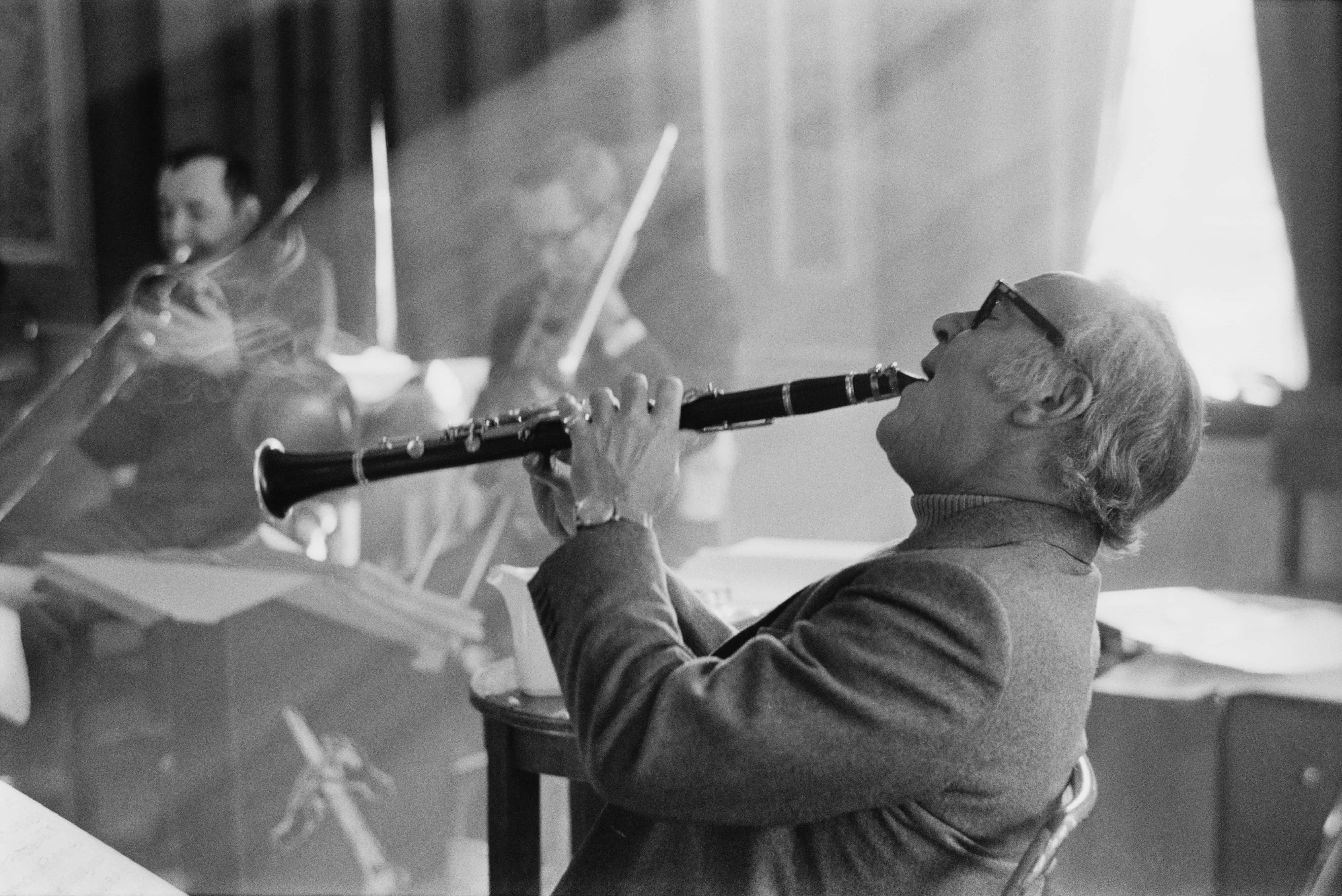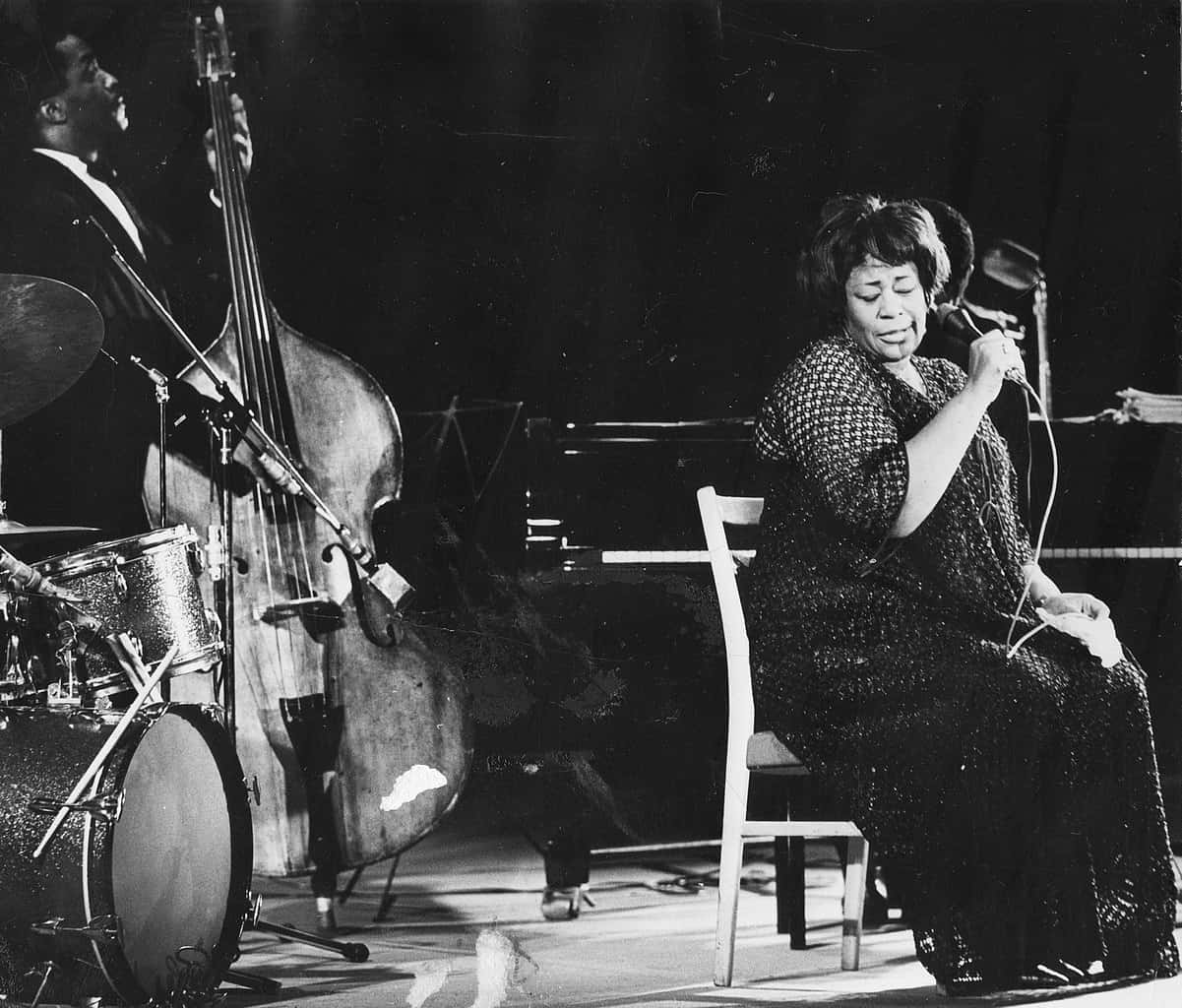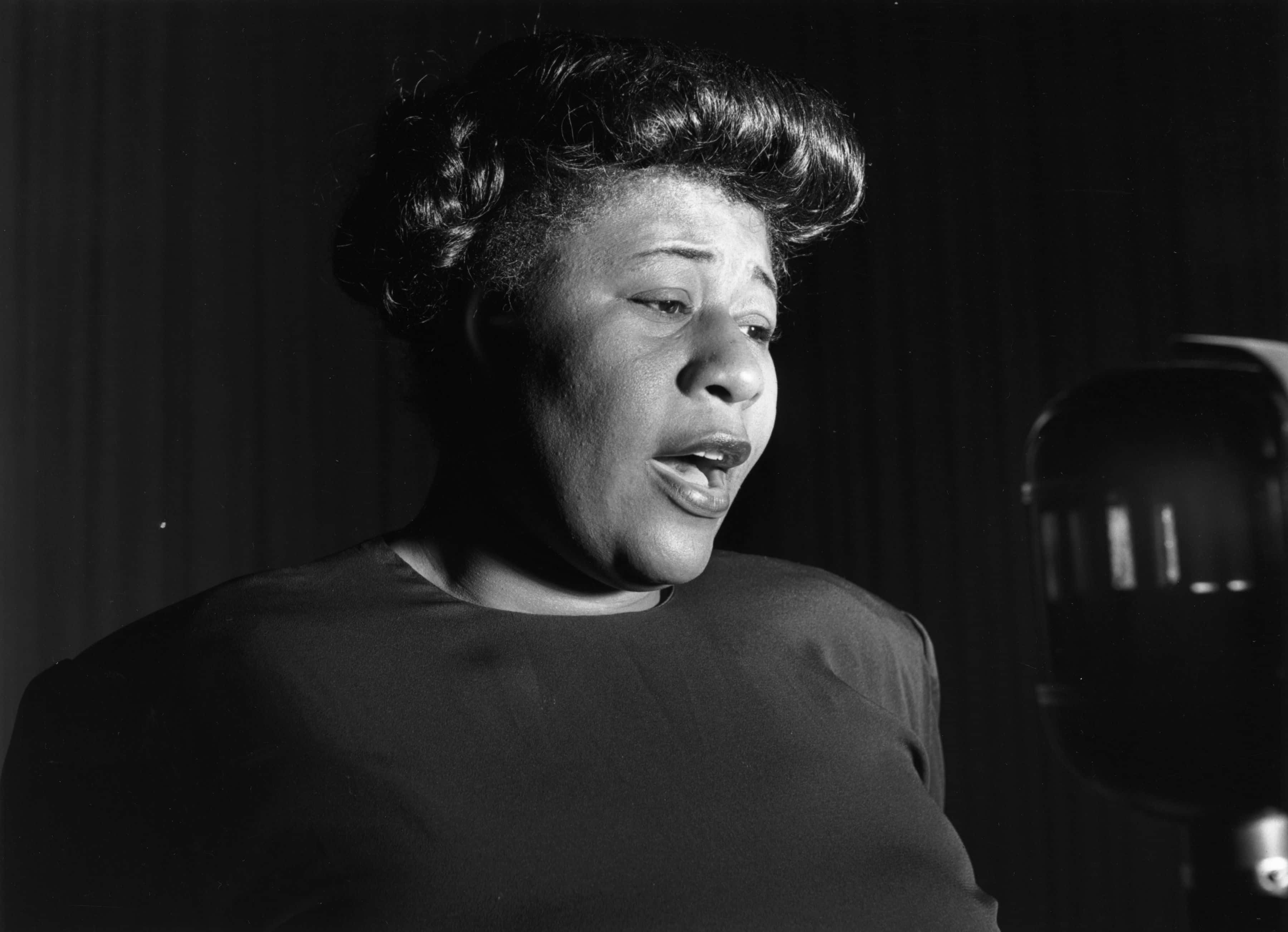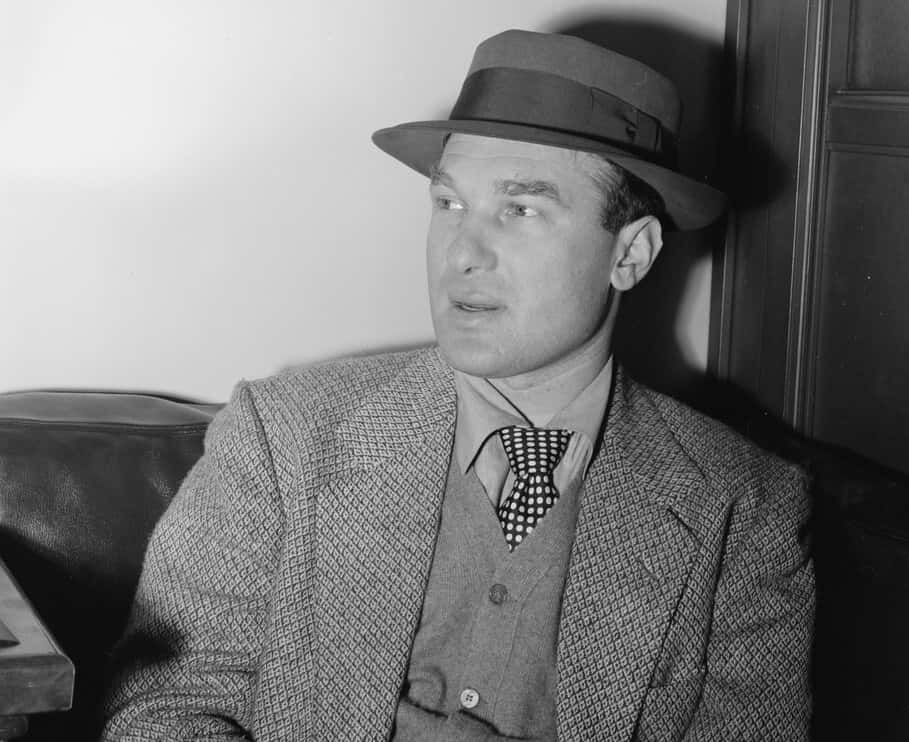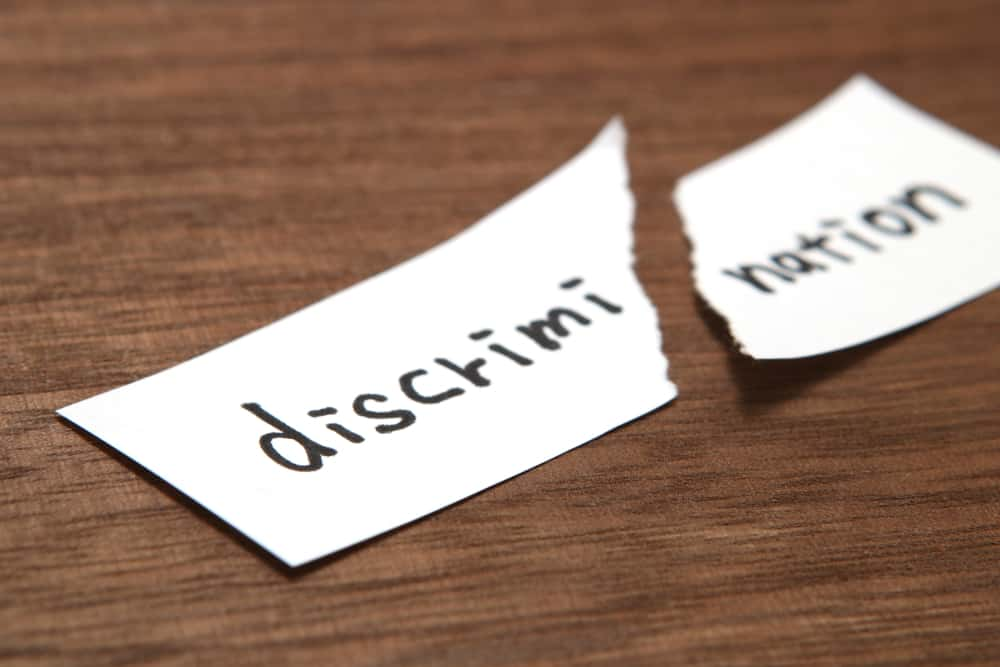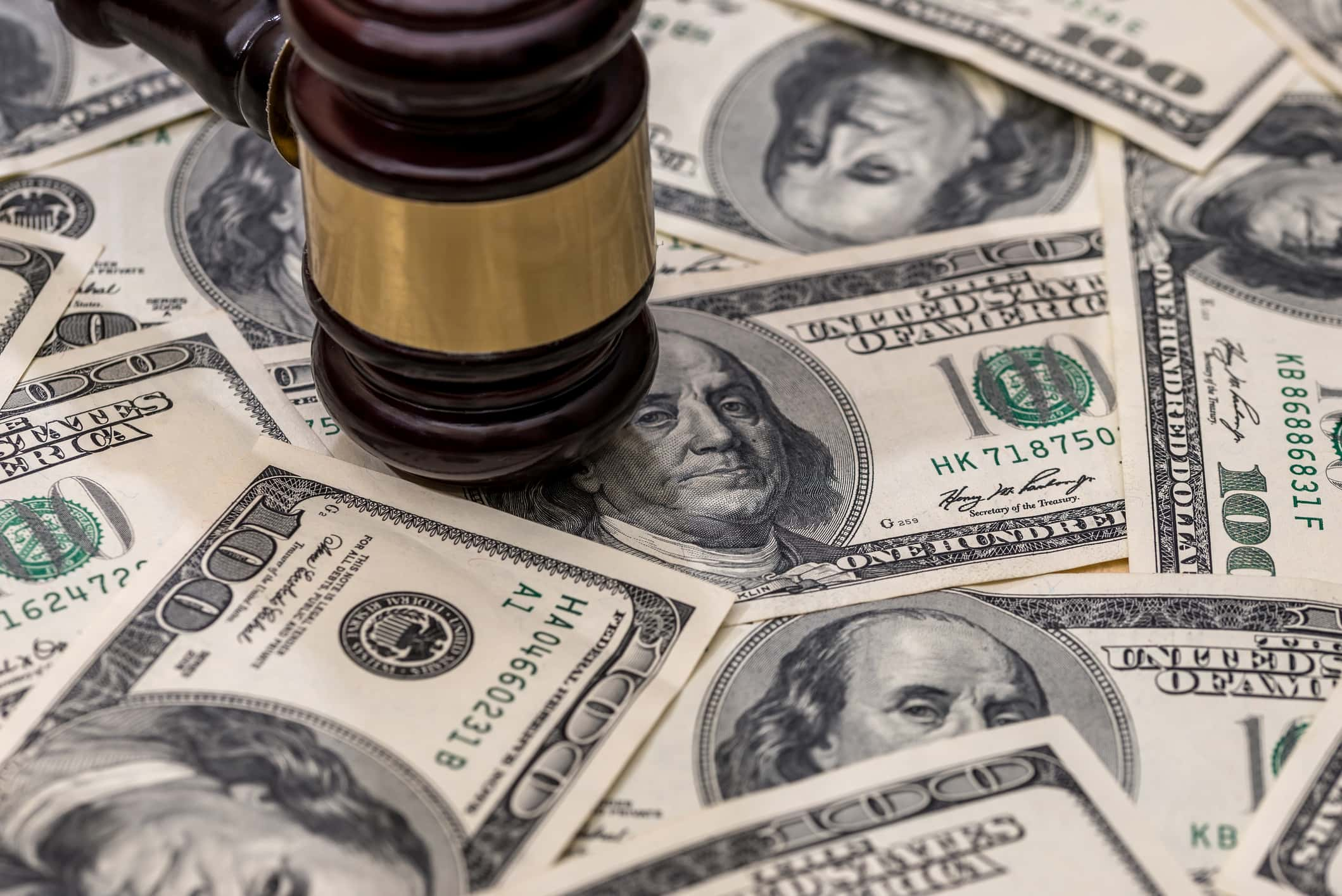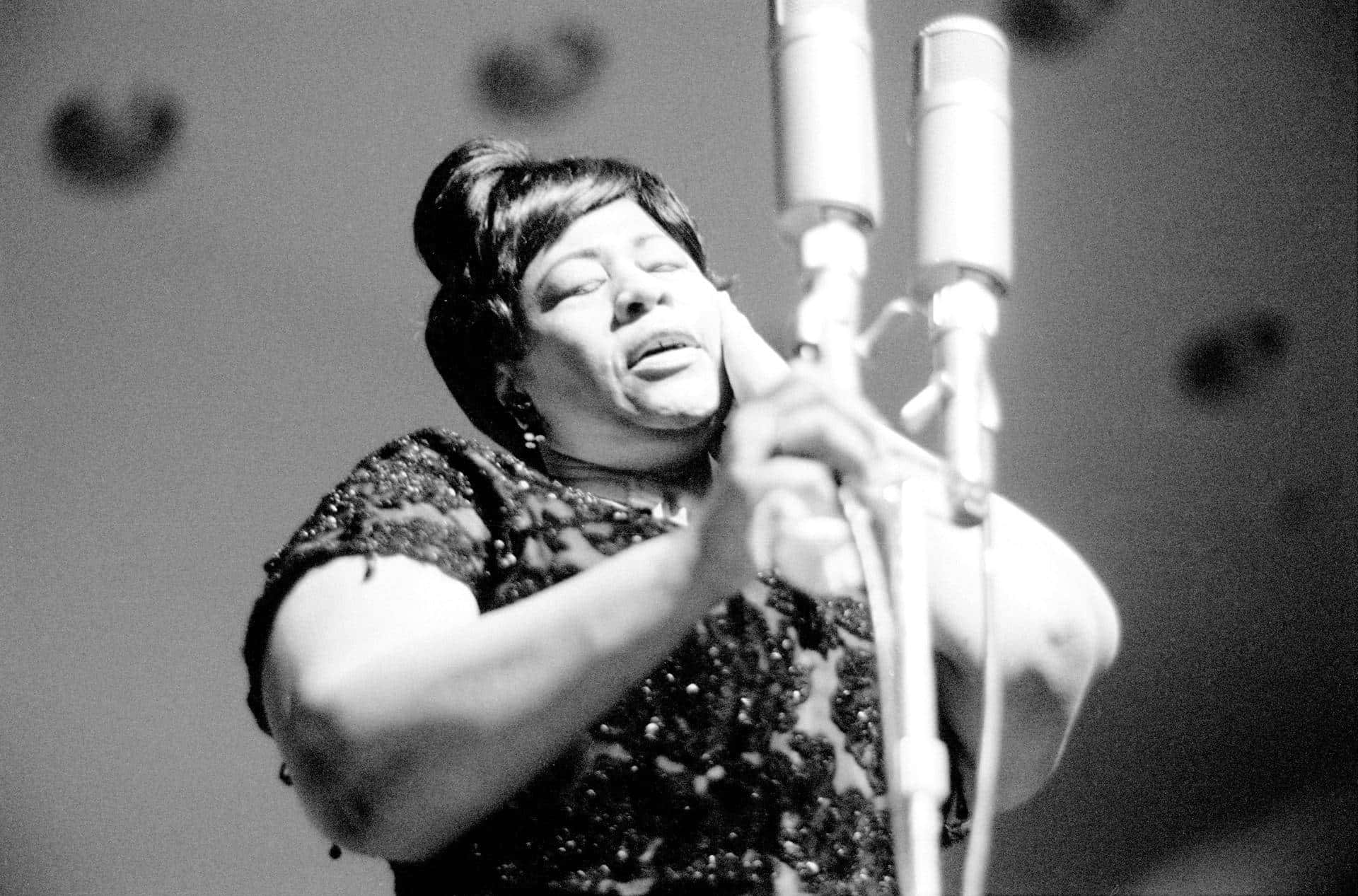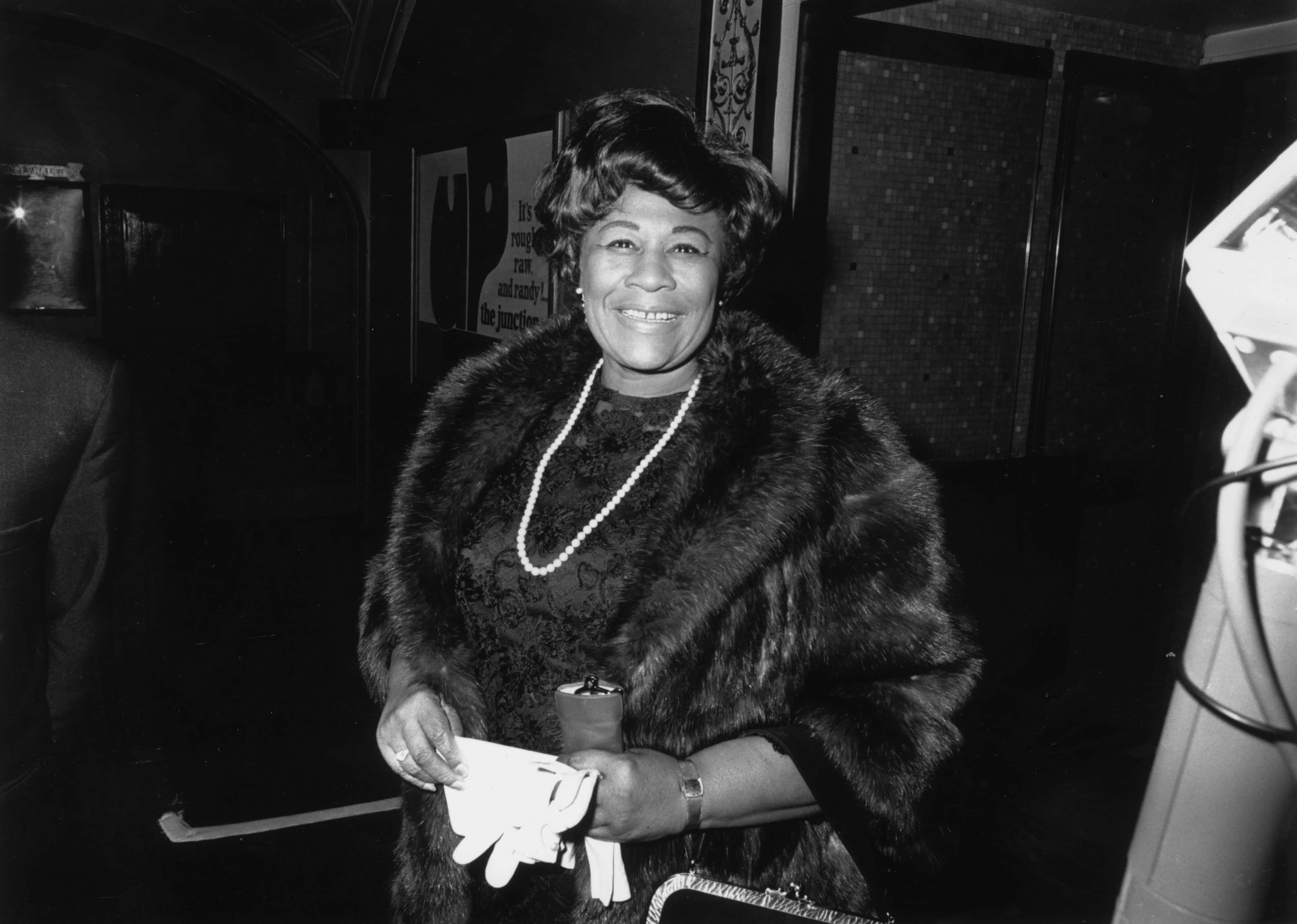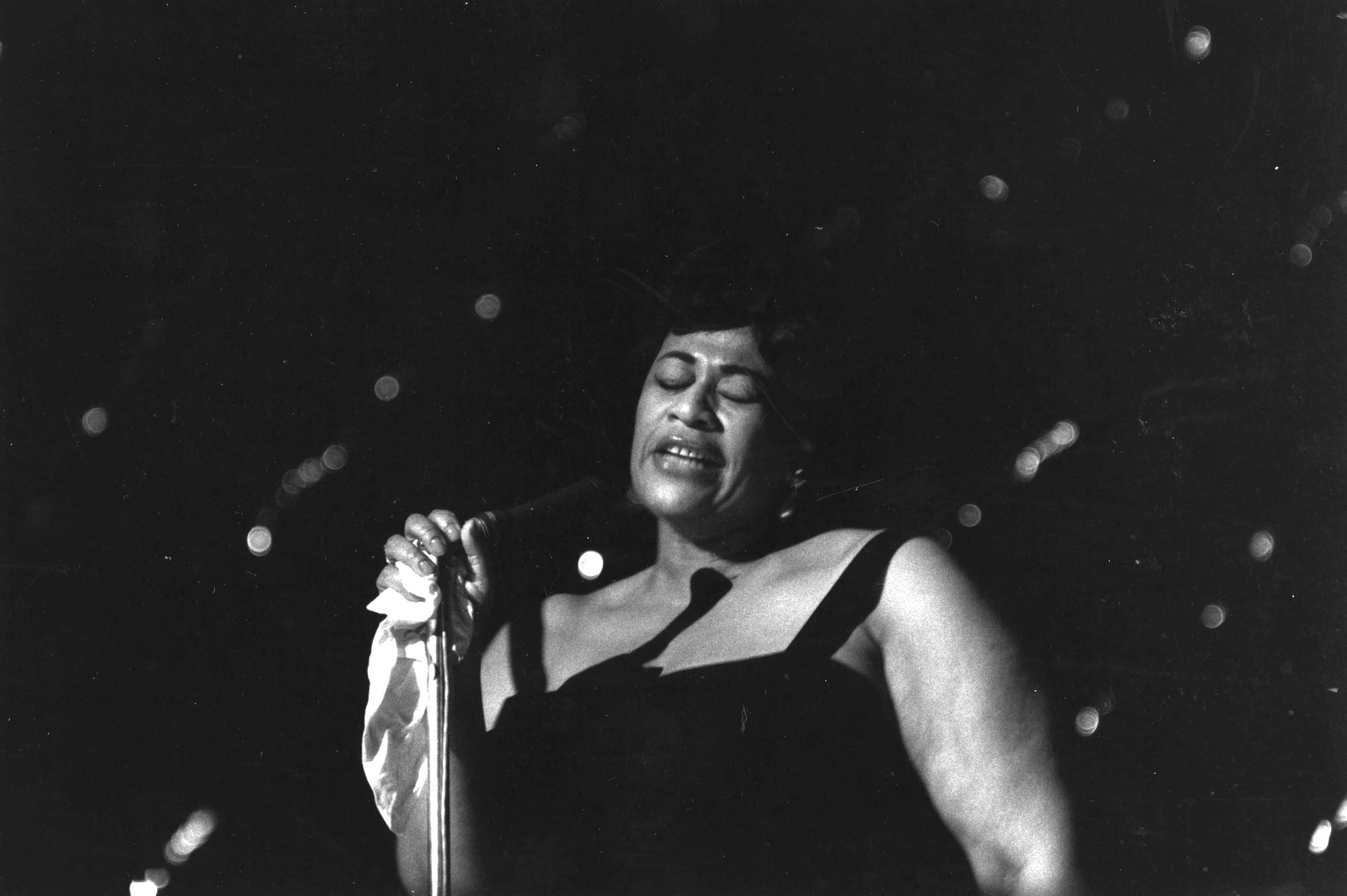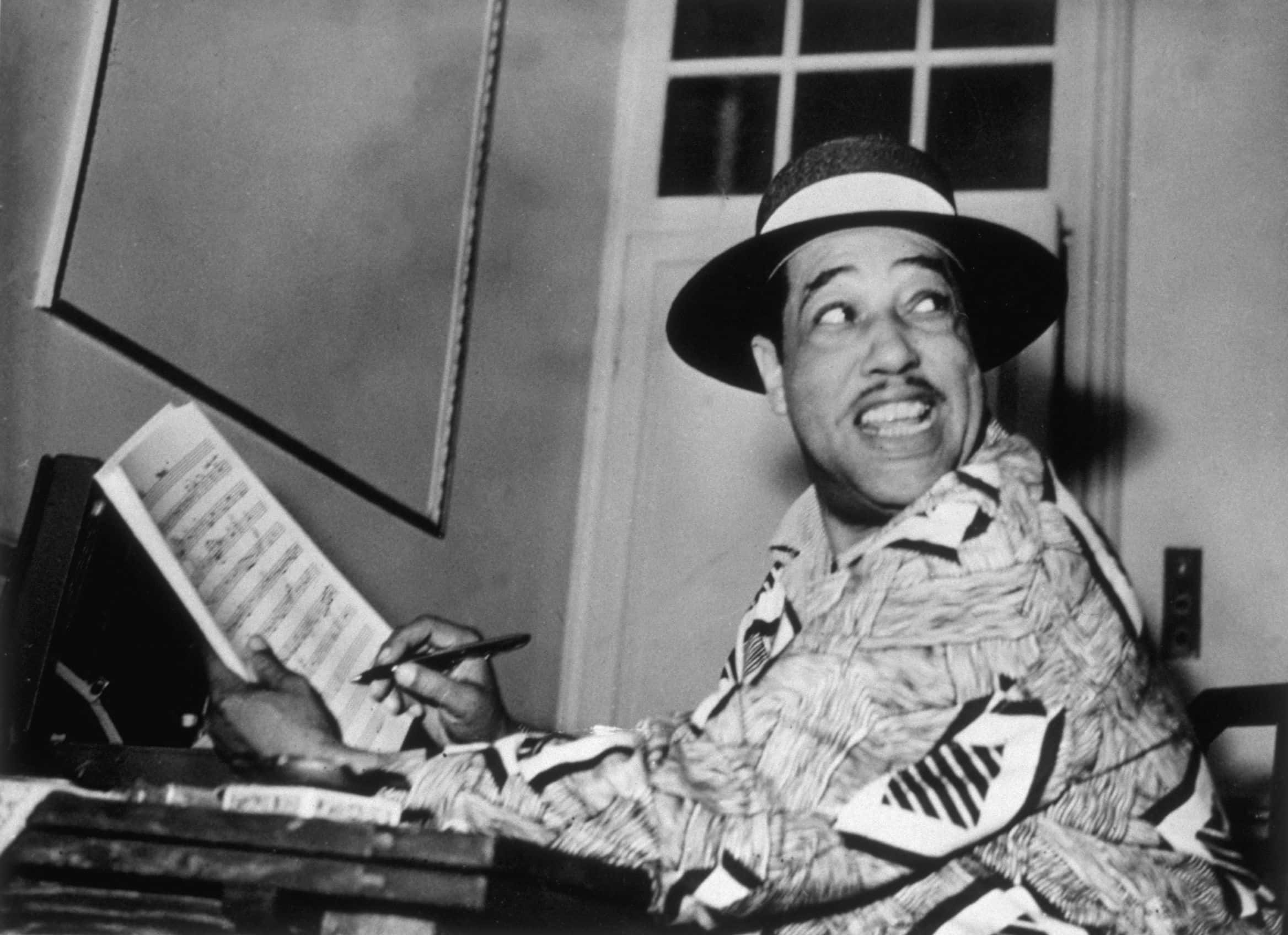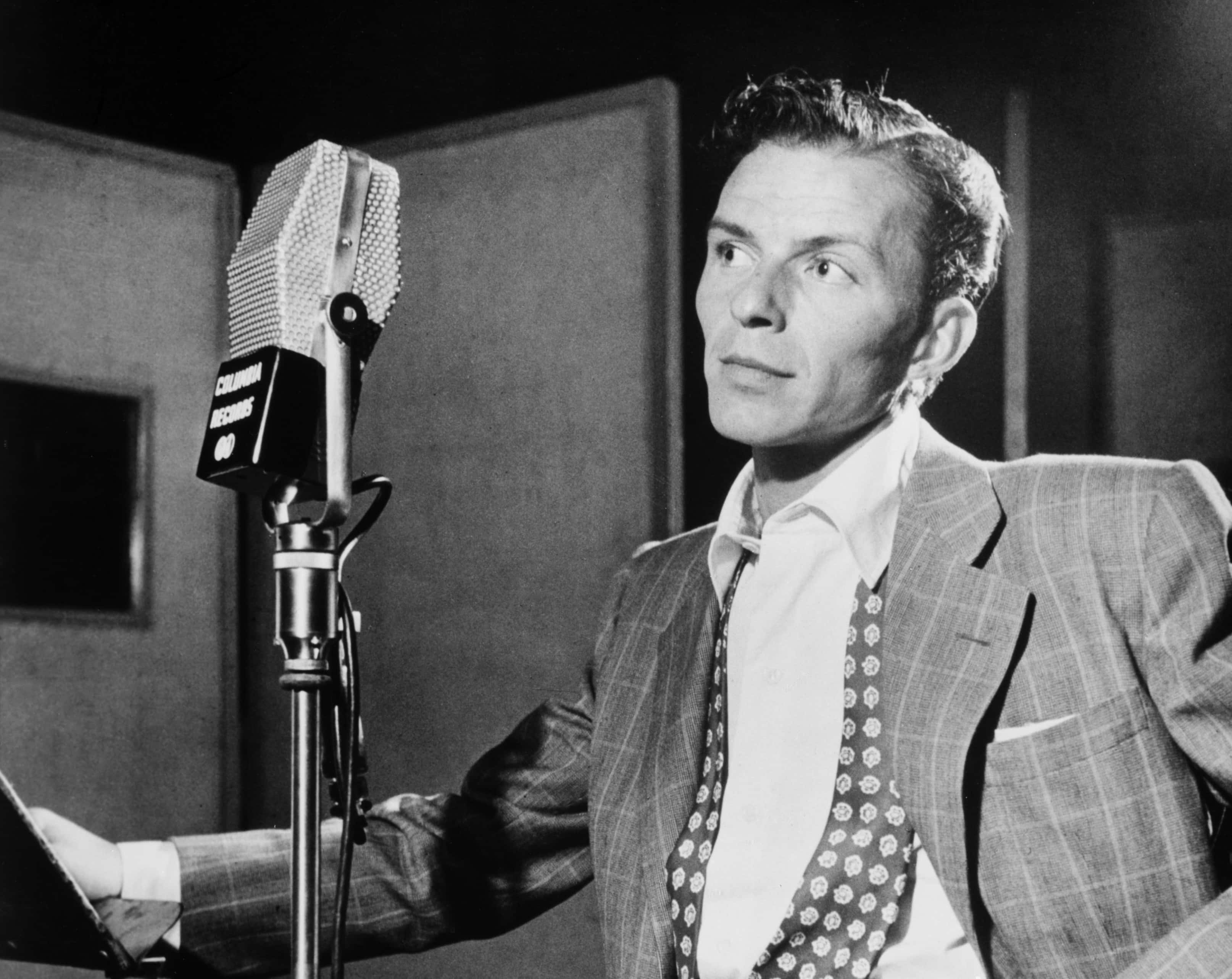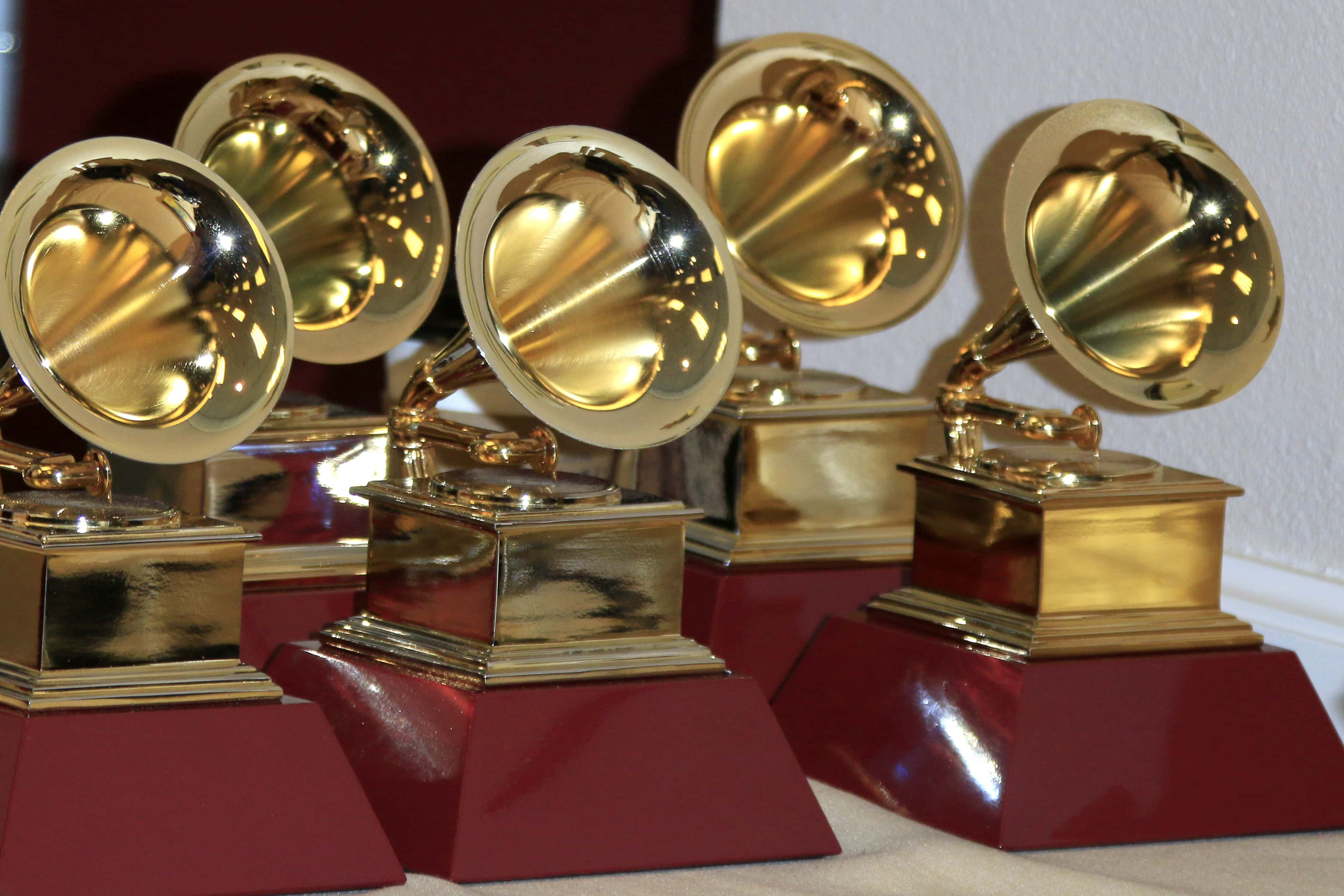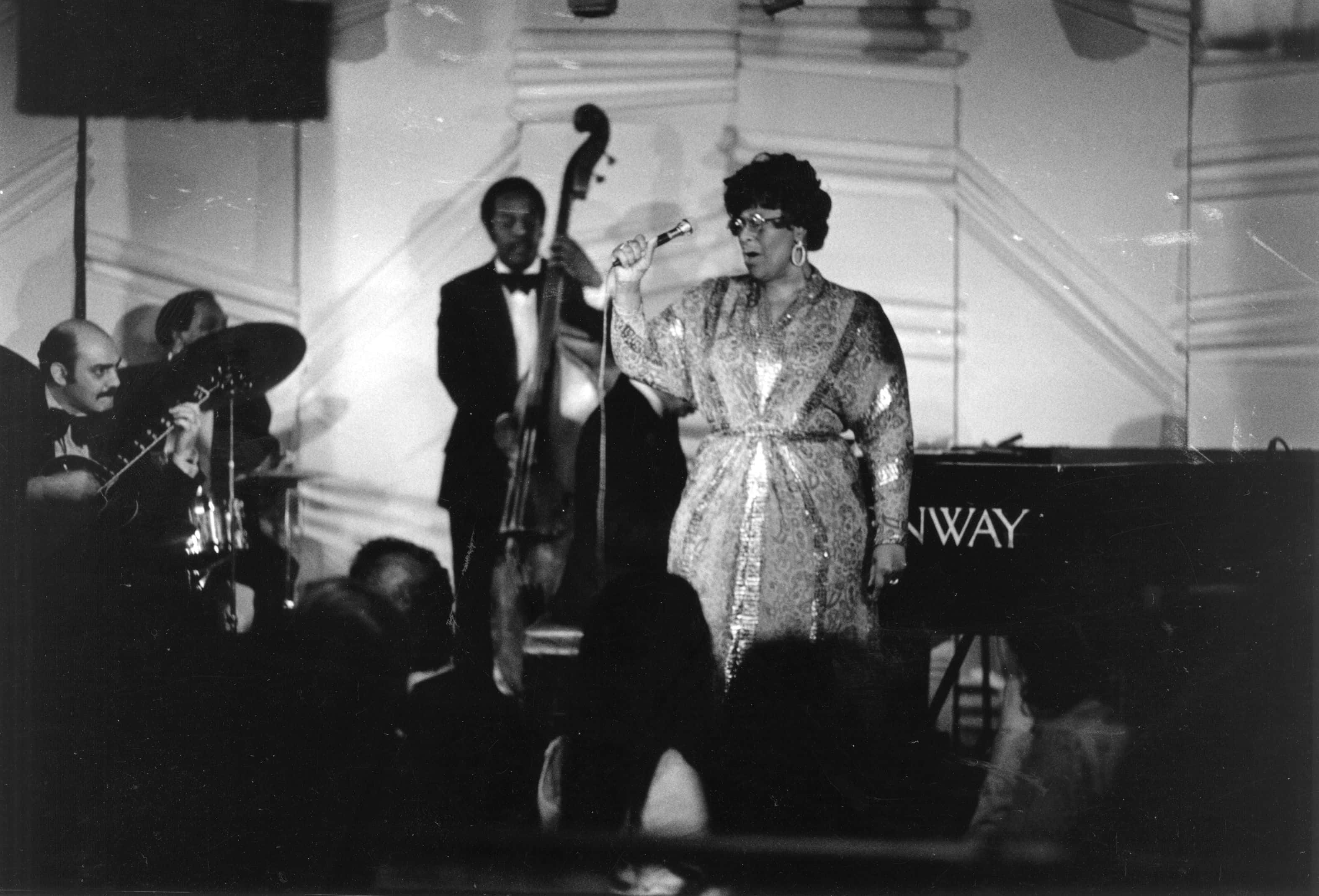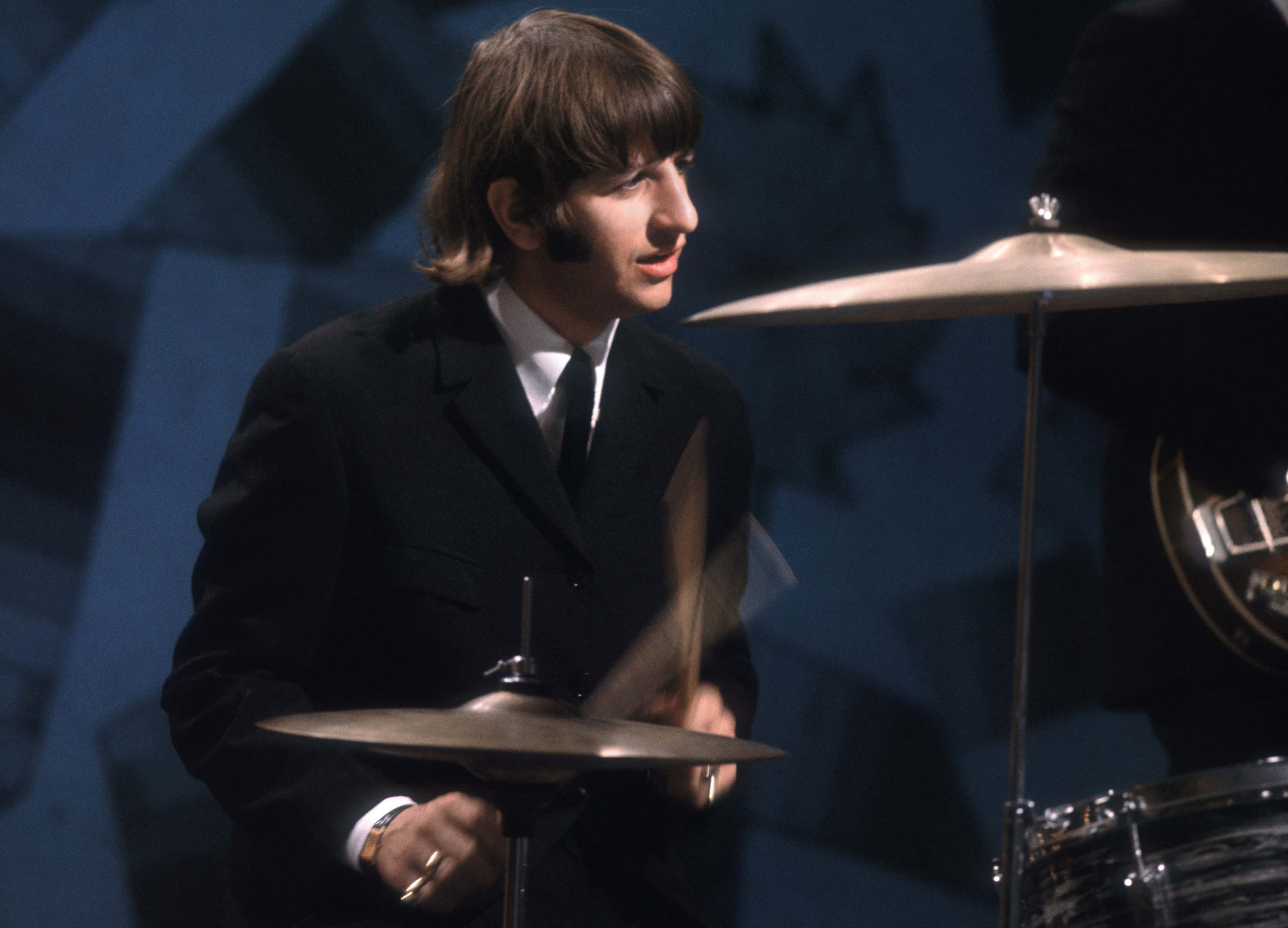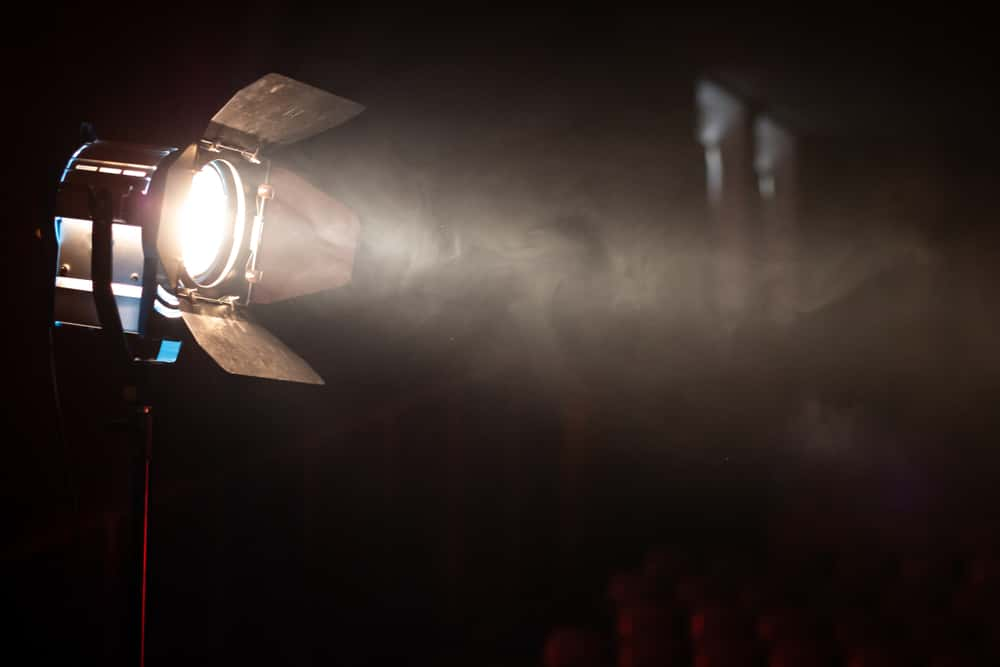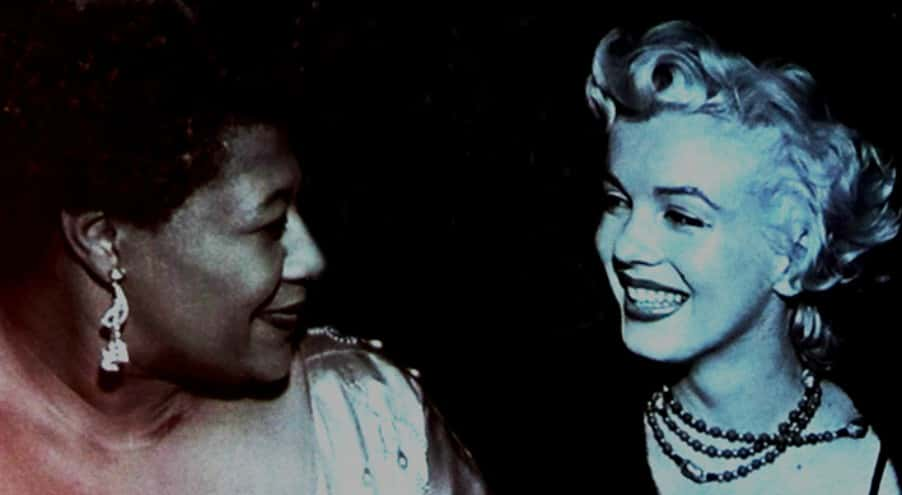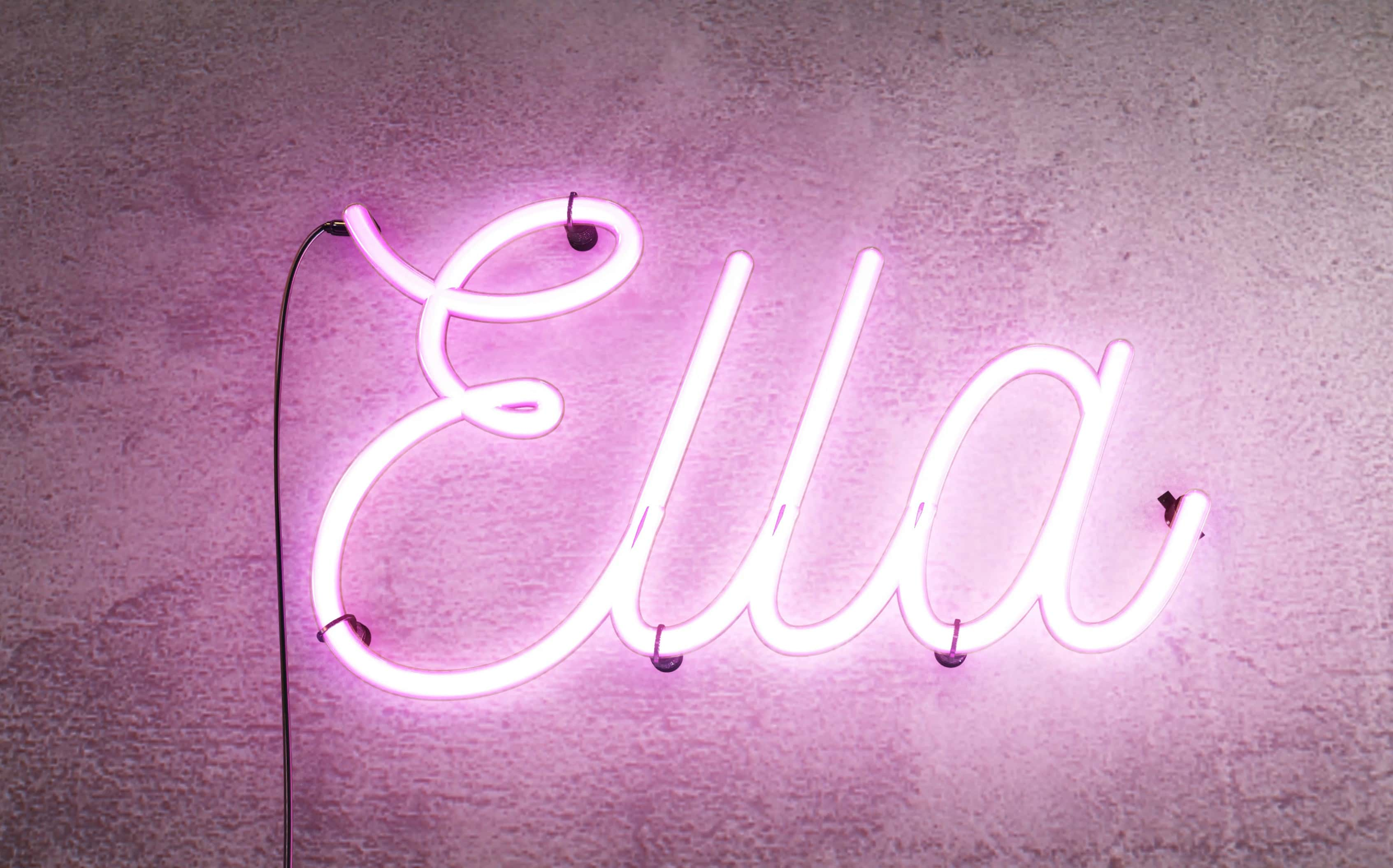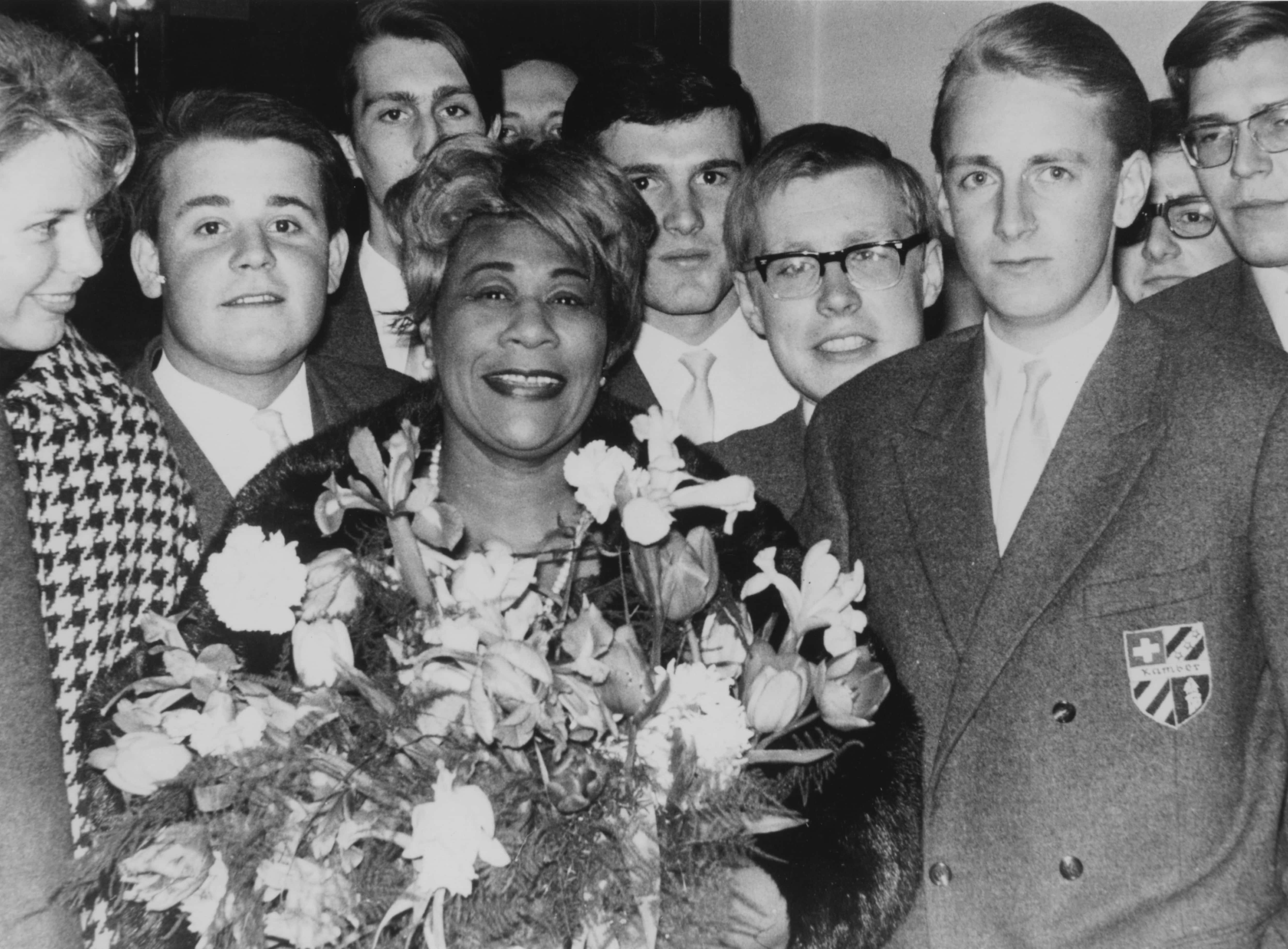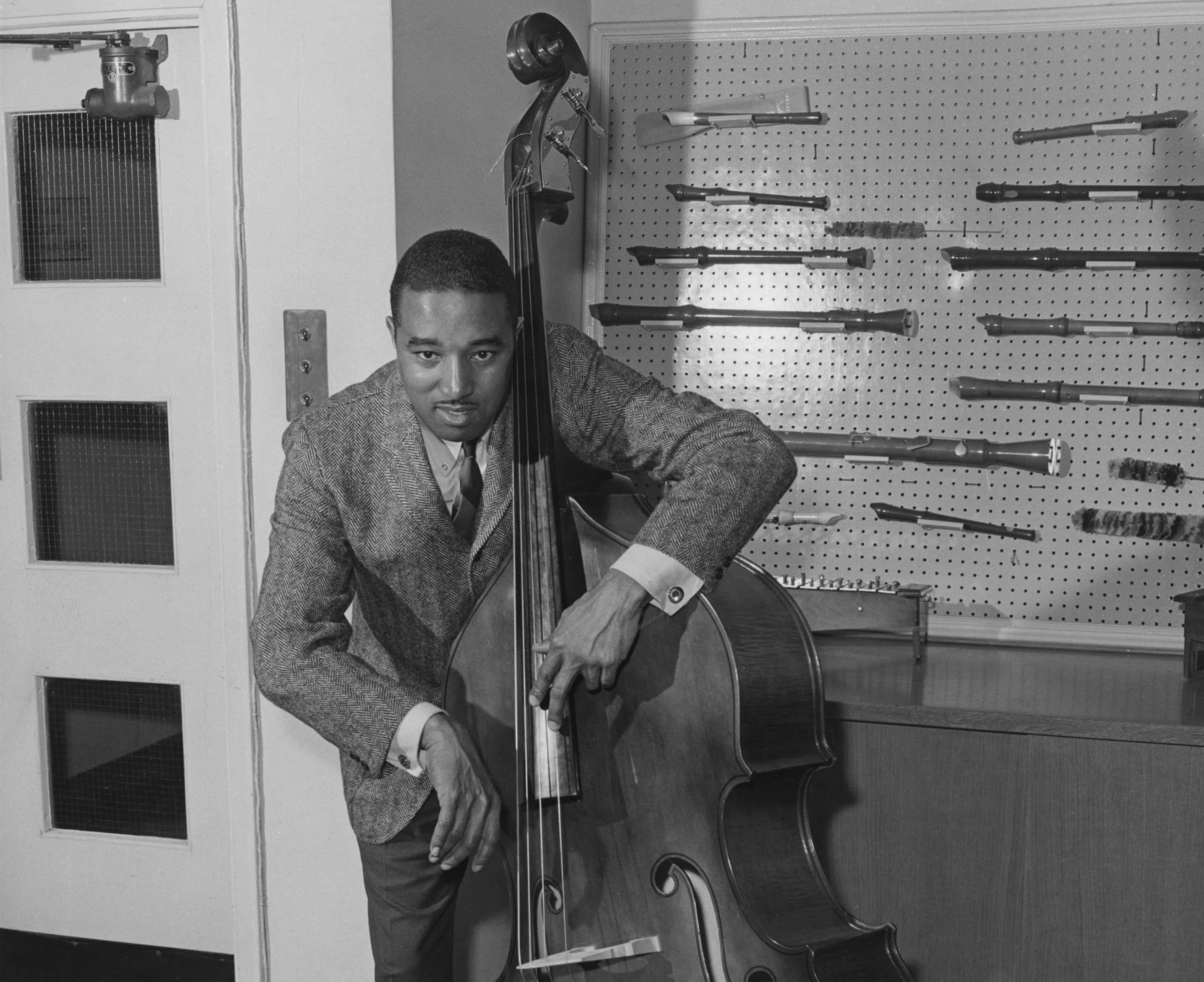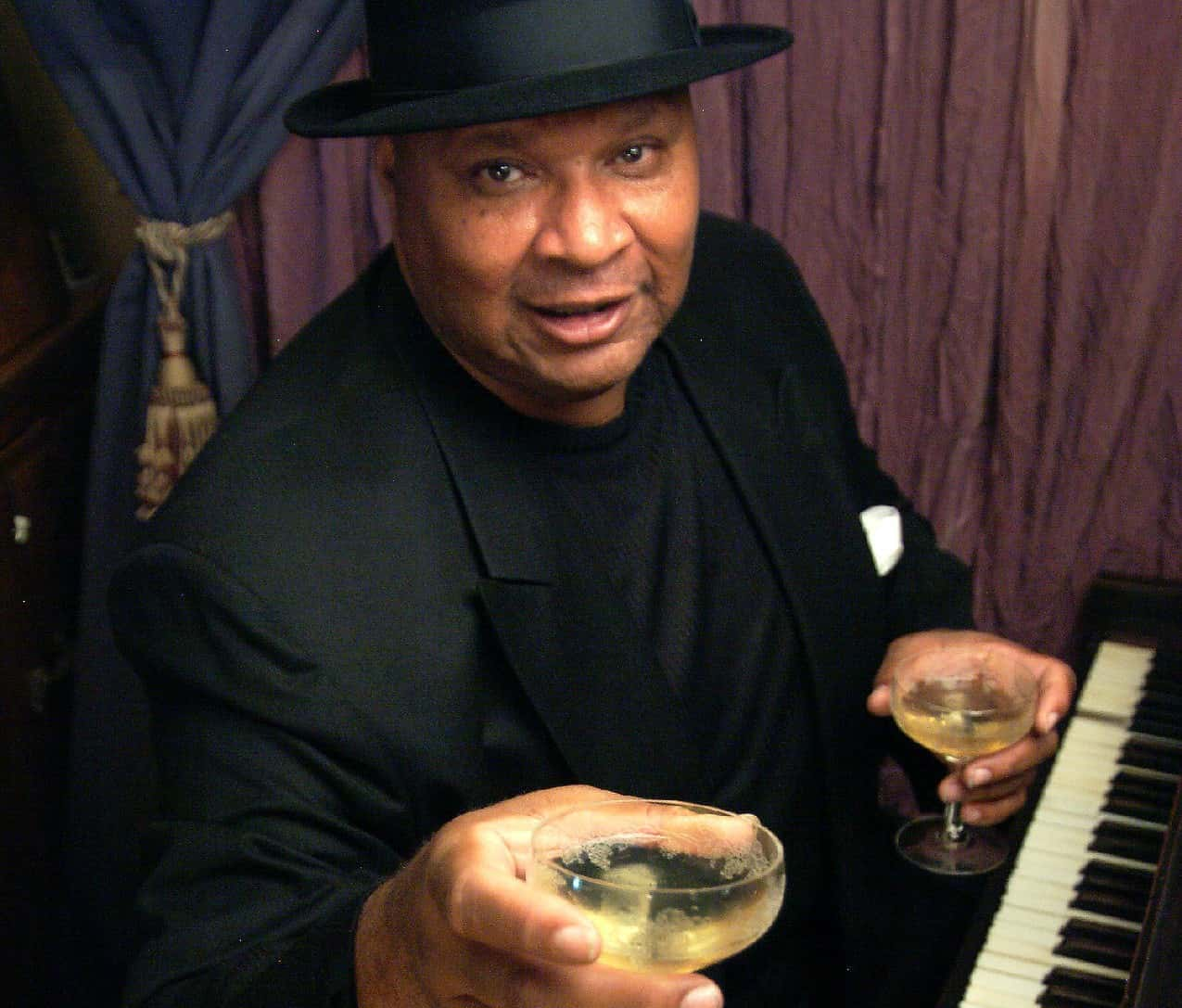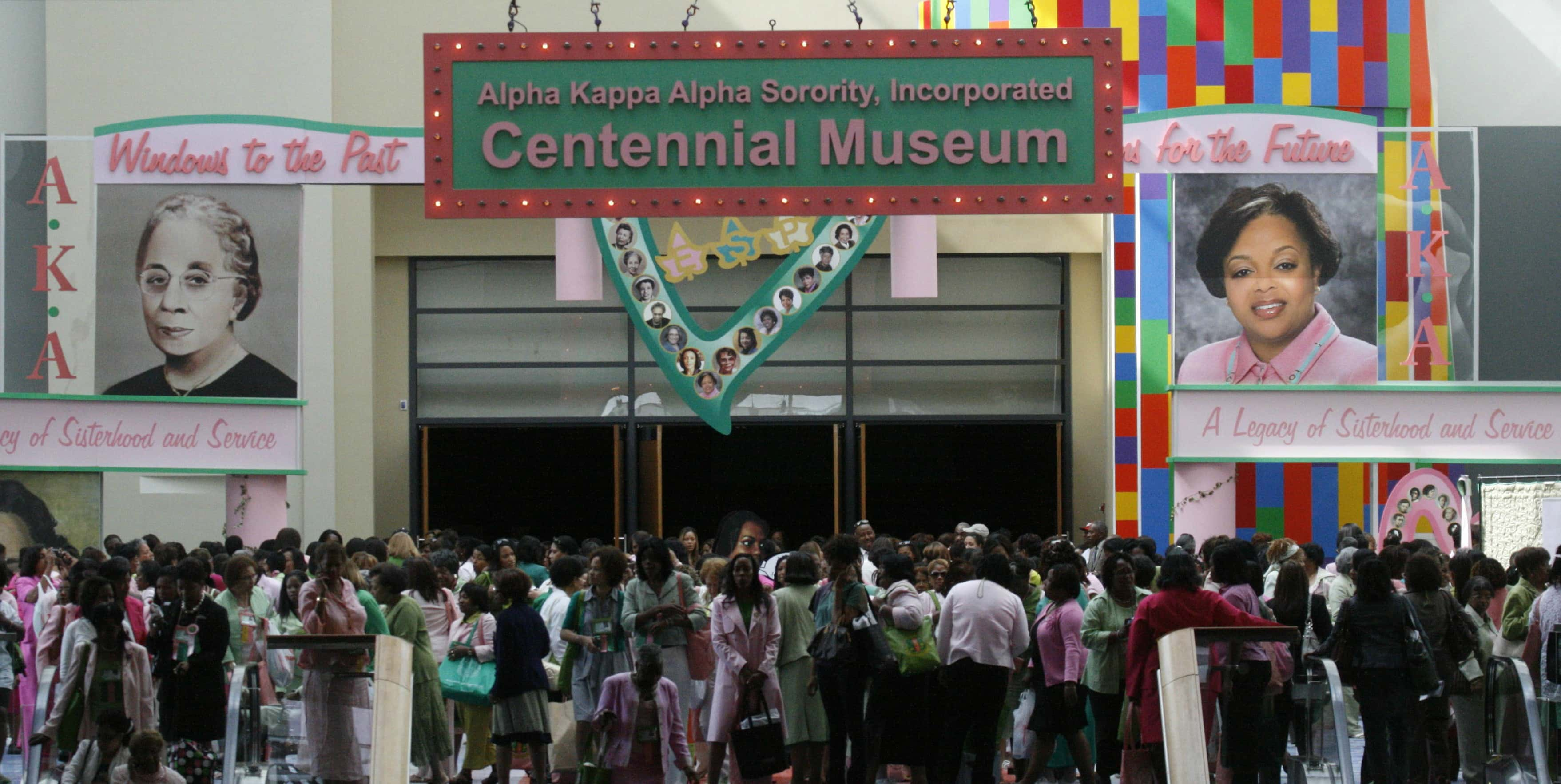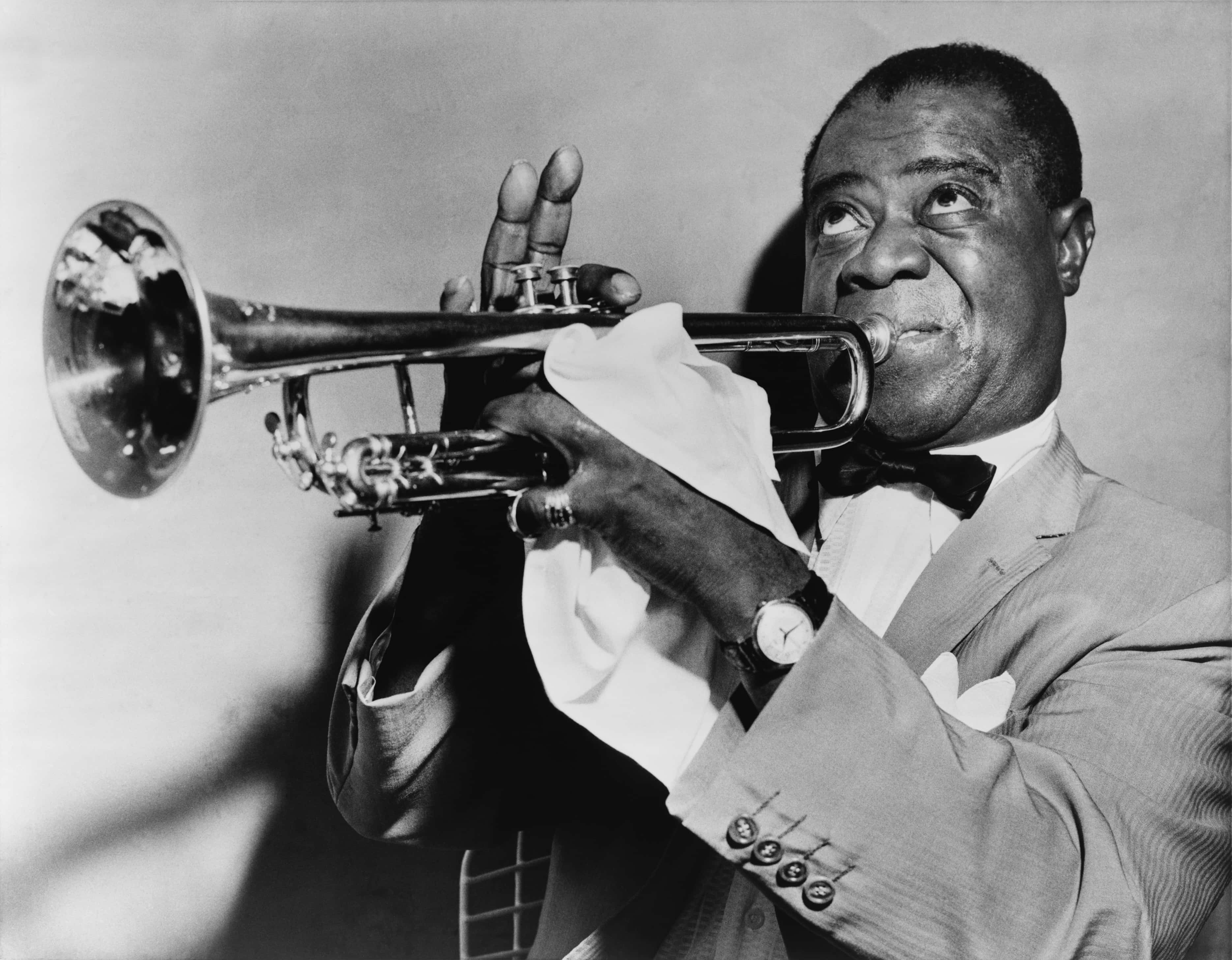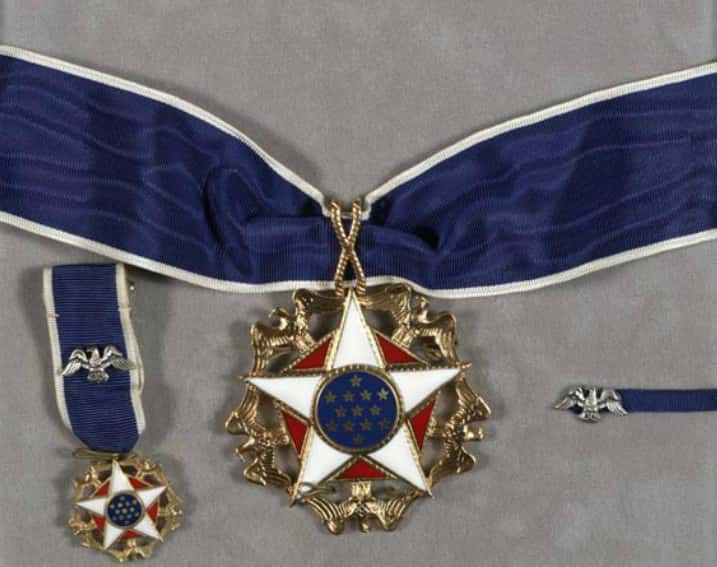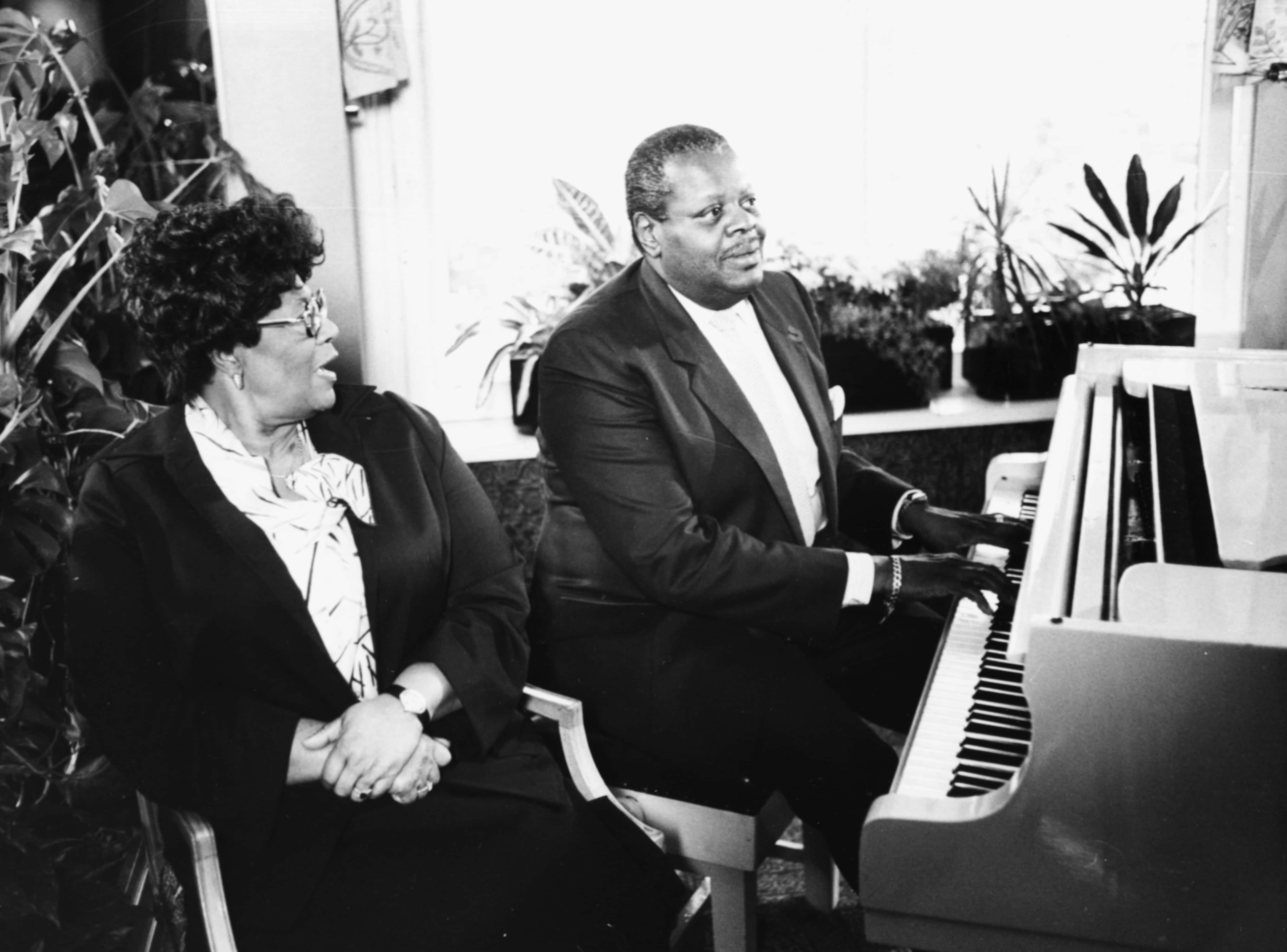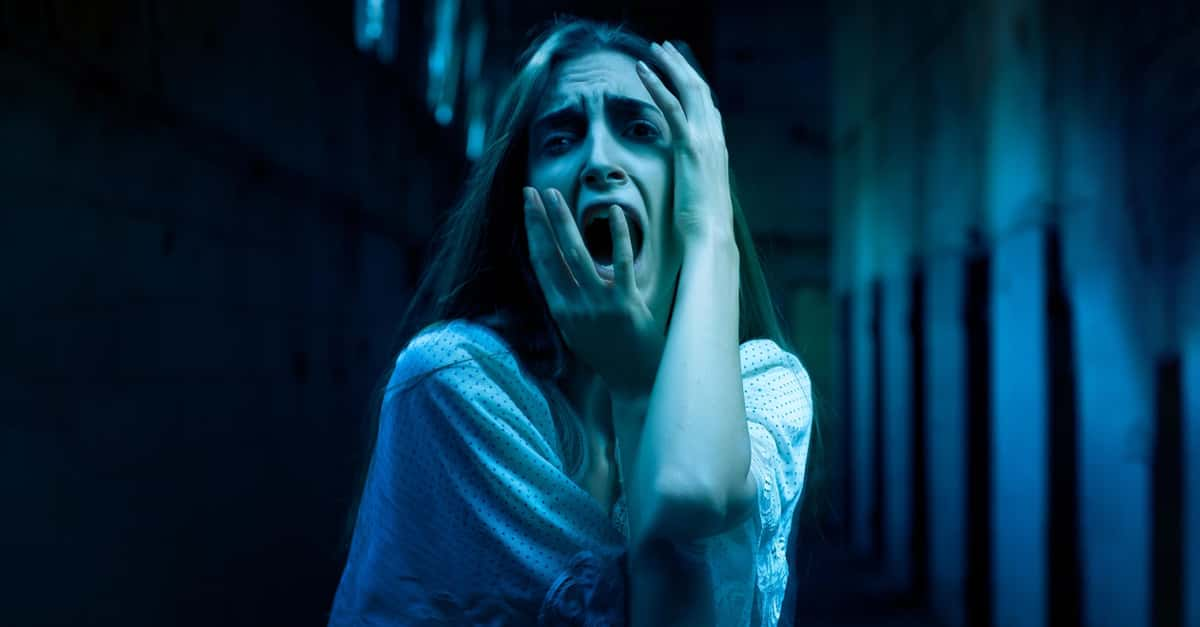Better than any other popular singer, Ella Fitzgerald realized the potential of the human voice as a musical instrument. And better than any jazz musician, Fitzgerald innovated her genre and evolved alongside it. Beginning her career as a smooth swing singer, she kept pace with the adventurous improvisation of bebop. When bop became too complex for popular audiences, she concentrated on adapting the sentimental American songbook.
In her 60-year career, Fitzgerald recorded more than 200 albums, many of them classics and earned the nickname, the First Lady of Song. Here are 42 show-stopping facts about the inimitable Ella Fitzgerald.
Ella Fitzgerald Facts
1. A Star is Born
Ella Jane Fitzgerald was born in Newport News, Virginia on April 25, 1917 to William Fitzgerald and Temperance "Tempie" Henry. Fitzgerald’s parents (who weren't married at the time of her birth) split up shortly after she was born. Tempie and her boyfriend Joseph Da Silva (a Portuguese immigrant and soon, the father of Fitzgerald's half-sister, Frances) raised young Ella.
2. Harlem Renaissance
In 1932, when the singer was just 15 years old, a car crash changed Fitzgerald's life forever. Her mother Tempie was gravely injured and died soon after the accident. Fitzgerald continued to live with Da Silva for the year, but soon travelled to an aunt in Harlem. Harlem was the right place for Ella for a few reasons. Happily, the city had a flourishing arts and music scene. Less happily, biographers believe that Da Silva mistreated Fitzgerald. Getting away from him could only be a good thing.
3. Juvenile Delinquent
When she moved to Harlem, Fitzgerald's turbulent upbringing caught up with her. She began cutting classes and quickly stumbled into the neighborhood's criminal underworld. She found some part-time work as a numbers runner for the mob and acted as a lookout for a local bordello. Eventually, the police arrested her and sent to a reform school in Hudson, New York.
4. Boswell That Ends Well
Fitzgerald endured some troubled teenage years—some biographers even report that Fitzgerald escaped the reformatory and experienced homelessness for a time—but she found solace in the world of music and dance. She especially adored the Boswell Singers, a trio of jazz-inflected pop vocalists. Fitzgerald admits she modelled her early singing style on that of the Boswell’s lead singer, Connie Boswell.
5. American Idol
Fitzgerald made her stage debut in 1934 when she signed up for Amateur Night at the legendary Apollo Theatre in Harlem. Fitzgerald planned to perform a dance routine, but when she realized there were other, better, dancers performing that night, she took a chance and sang instead. Fitzgerald’s gamble paid off—she won the evening’s $25 prize, thus beginning her career as a professional singer. With the Apollo's reputation for harsh crowds, switching to singing was definitely a good strategy!
6. Caught In A Webb
The following year, Chick Webb invited 16-year-old Fitzgerald to join his band. Webb, a drummer, led one of the most popular swing bands in the country. Though his first impression of Fitzgerald wasn't great (he found her shy and awkward), he couldn't deny her talent. Soon, Lady Ella became Webb’s lead vocalist. Even better, Fitzgerald’s new job paid $12.50 a week: an excellent wage for the 1930s.
7. Pitch Perfect
Fitzgerald had one huge advantage as a singer: her perfect pitch. Fitzgerald could distinguish and replicate notes so precisely that her band tuned their instruments to her voice. Everyone else needed electronic tuners and pitch pipes!
8. Mother Goose’s Golden Egg
Fitzgerald scored a massive hit for the Chick Webb Orchestra in 1938. “A-Tisket, A-Tasket,” co-written by Fitzgerald and based on an old nursery rhyme, sold more than a million copies. The tune became one of the best-selling records of the decade and gained Fitzgerald the nickname "The Queen of Swing."
For modern audiences, the track is a jazz standard and a pillar of musical history, referenced in songs by Eminem and Madonna.
9. One Hit Wonder?
Fitzgerald later wrote a sequel to “A-Tisket, A-Tasket” called “I Found My Yellow Basket.” It was not quite as successful as its predecessor. Luckily, Fitzgerald was a hard worker and didn't bank on just one form of success. While the Chick Webb Orchestra was Fitzgerald’s primary gig in the late 1930s, she also sang with the Benny Goodman Orchestra, and her own group, the Savoy Eight. It's safe to say she had multiple income streams and could weather the disappointment of the yellow basket.
10. Going Solo
Sadly, Chick Webb died in 1939. The band tried to carry on for a little while as Ella Fitzgerald and Her Famous Orchestra, but eventually they dissolved. Fitzgerald, like any group's designated star, struck out on a solo career, acting as the singer and frontwoman of groups like the Ink Spots, the Delta Rhythm Boys, and Louis Jordan’s Tympany Five.
11. Crazy Scat Lady
Once she struck out on her own, Fitzgerald shifted her focus away from the big-band style of jazz that was popular in the 1930s and transitioned to the more complex and adventurous bebop that sounded through New York. To merge her voice with the normally lyric-less music, Fitzgerald started “scatting,” a kind of wordless vocal improvisation.
12. The Lady Is Good
Fitzgerald’s most notable bebop recordings, “Lady Be Good” and “Flying Home,” are some of the most influential jazz recordings of all time.
13. All That Jazz
In 1949, Fitzgerald met promotor Norman Granz, who recruited the singer for his “Jazz at the Philharmonic” concert series. The series toured the country and did more than spread good music. Granz was also a vigorous civil rights advocate. He was passionate about desegregating segregated venues and ensured that Fitzgerald received equal billing and pay to white or male performers.
14. Political Prisoners
Fitzgerald and her band frequently faced discrimination in the segregation-era United States. Once, prior to a performance in Houston, the police arrested her, Dizzy Gillespie, Illinois Jaquet, and promoter Norman Granz. While they were charged with gambling, Granz had lobbied heavily for the concert to be desegregated, and many felt that the arrest wasn't really about gambling at all.
15. Her Biggest Fans
When she was released, Houston police asked for Fitzgerald’s autograph. Um, how about no?
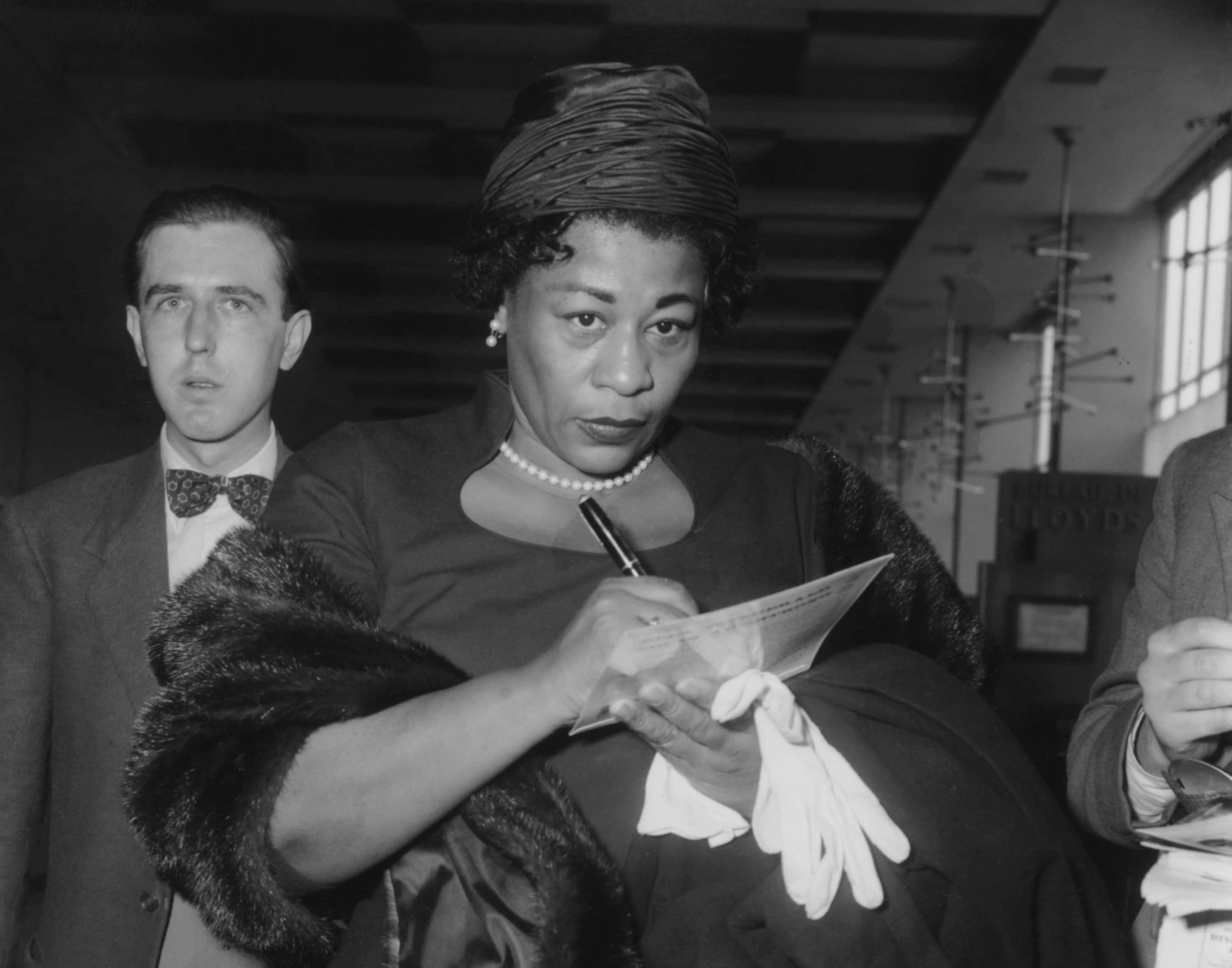 Getty Images
Getty Images
16. A Little Turbulence
In 1954, Fitzgerald and her entourage packed their bags and got ready to travel Australia. They traveled to the airport and loaded their suitcases on the plane when suddenly, the troupe was denied their seats because of their skin color. Fitzgerald was powerless, struggling to make alternate arrangements for three miserable days in the Honolulu airport. In the end, the chanteuse sued Pan-American airlines for racial discrimination and received, in her words, “a nice settlement.”
17. Check the Label
Like all great artists, Fitzgerald liked to test her own limits and expand her craft. Over time, she grew tired of the improvisational, adventurous bebop style and shifted her attentions to new territory. Fitzgerald tackled the Great American Songbook, the classic jazz and pop standards created by songwriters like George Gershwin and Cole Porter. To help mark this new phase in her career, Norman Granz founded a record label just for her.
18. In the Library
Fitzgerald’s first recording for the newly minted Verve Records was Ella Fitzgerald Sings the Cole Porter Song Book. Originally released in 1956, the album received major honors in recent years. It was inducted in the Grammy Hall of Fame and being including as one of just 50 albums listed by the Library of Congress' National Recording Registry.
19. Ella Sings Everybody
Fitzgerald followed Ella Fitzgerald Sings the Cole Porter Song Book with Ella Fitzgerald Sings the Duke Ellington Songbook. She would release a new album in the series every year until 1964, covering such songwriters as Irving Berlin, Johnny Mercer, and Jerome Kern. These covers did more than let Lady Ella pay homage to influential singers and songwriters. They also introduced her to a wide variety of listeners and allowed her expand her repertoire beyond jazz.
20. In Good Company
Ella Fitzgerald Sings the Duke Ellington Song Book is the only album in the series that features the actual songwriter. Duke Ellington and his collaborator, Billy Strayhorn, played piano and narrated the record; they also wrote two new songs, “E and D Blues” and “Portrait of Ella Fitzgerald.” It's not surprising to know that Ellington and Fitzgerald were old friends and had known each other since the 1930s.
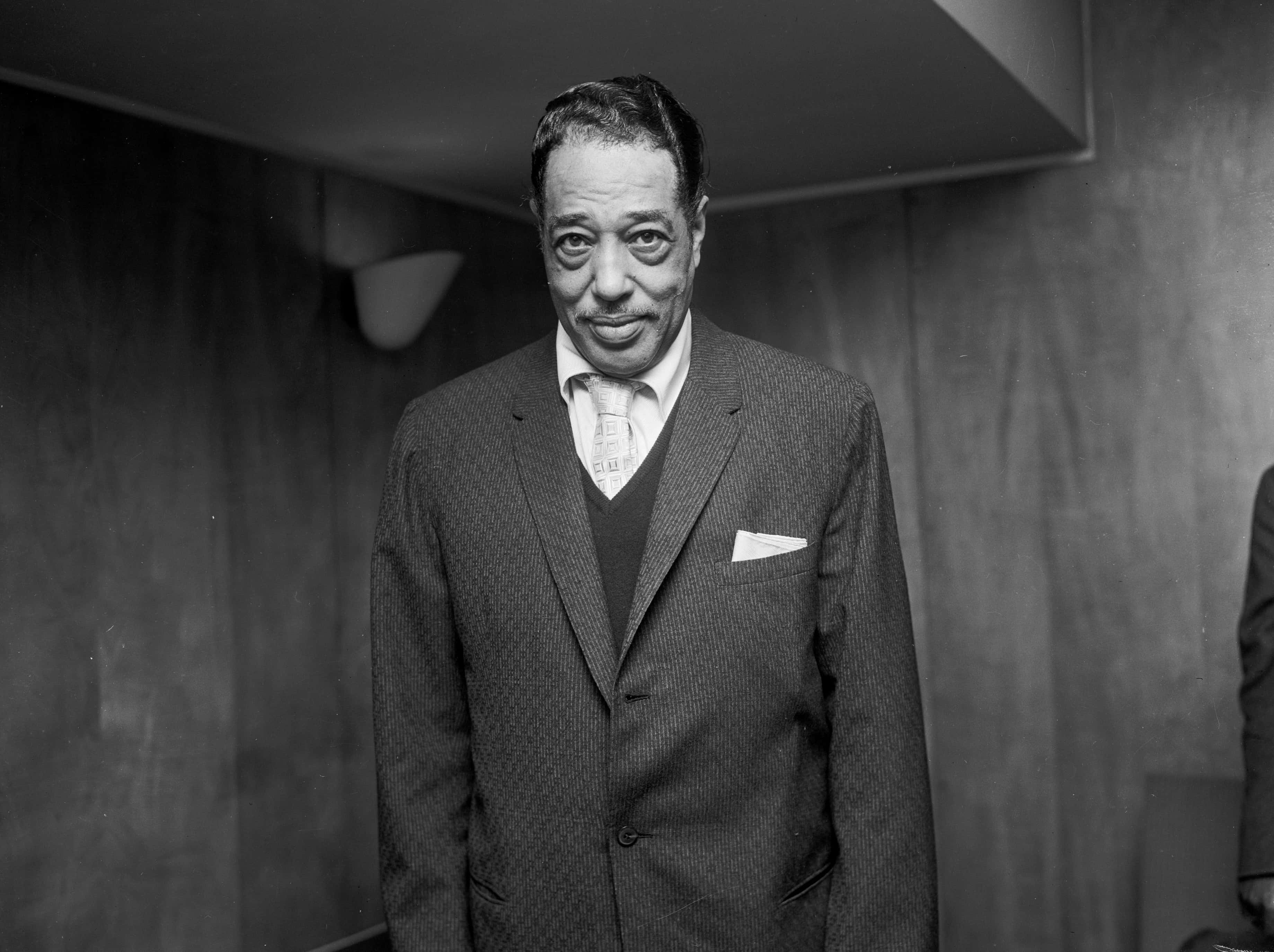 Getty Images
Getty Images
21. A Date With the Duke
Ella Fitzgerald Sings the Duke Ellington Song Book led to a fruitful ongoing collaboration between Ella and the Duke. They frequently performed together throughout the 1960s and recorded a studio album, Ella at Duke’s Place, in 1965. Apparently, the project took a year to record because Ellington wouldn't settle for anything less than perfection. To quote him, "With Ella up-front, you've got to play better than your best." High praise!
22. He’s No Rat
Fitzgerald’s Song Book series was so successful that Capitol Records proposed doing a similar project with their star, Frank Sinatra. Sinatra refused, and forbid the label to repackage any of his songs in a similar style, out of respect for Fitzgerald. While Sinatra wouldn't record in Fitzgerald's style, he was happy to sing alongside her. The legendary duo performed together multiple times.
23. Jazz and Pop
Fitzgerald won two Grammy Awards in 1958: Best Female Jazz Performance for The Duke Ellington Song Book and Best Female Pop Performance for The Irving Berlin Song Book. This was the first year the Grammys were awarded, so not only is Fitzgerald the first Black artist to win a Grammy, she's also the first to win multiple Grammys.
24. They Really Like Her
Fitzgerald would go on to win a total of 14 Grammy Awards over the course of her career, including a Grammy for Lifetime Achievement in 1967. Furthermore, six of her recordings have been entered into the Grammy Hall of Fame.
25. Genre-Hopping
MGM bought Verve Records in 1963 and dropped Fitzgerald’s contract, moving in a more commercial direction. This spelled the end of Fitzgerald’s Song Book series. While another artist may have tried to recreate past successes in this situation, Fitzgerald spent the remainder of the 1960s hopping from label to label and experimenting with genres. Lady Ella released albums of country songs, R&B, and contemporary pop hits.
26. Can’t Buy Me Love
In 1965, though, Fitzgerald was desperate for a hit. She agreed to record a novelty song about The Beatles drummer, Ringo Starr. “Ringo Beat” only served to annoy jazz purists, who refused to play the song on their radio stations. One of Fitzgerald's biographers has called the song "awful" but Factinate readers can decide for themselves here.
27. Ella-vision
A performer through-and-through, Fitzgerald loved acting and jumped at any chance to appear in movies, even though she was seldom given more than a few lines and a song. Her most notable role was as a singer in the 1955 film Pete Kelly’s Blues, but she made her movie debut 13 years earlier, giving a performance in the Abbott and Costello movie Ride ’em Cowboy.
28. The Queen of Clubs
Fitzgerald was close friends with Marilyn Monroe. A popular legend states that Monroe used her influence to help Fitzgerald find work in nightclubs that usually only hired white performers. Though it sounds nice, this isn't entirely true. Monroe did suggest Fitzgerald to booking agents at the Mocambo, but the Mocambo had booked black artists (including Dorothy Dandridge and Eartha Kitt) for several years at that point.
Apparently, Monroe urged the Mocambo to hire Fitzgerald, promising to attend every concert in the front row. Monroe knew her presence guaranteed sold out shows and press coverage. After Monroe, Frank Sinatra, and Judy Garland attended opening night, Fitzgerald's shows all sold out. The venue even extended her contract for an additional week.
29. The Play’s the Thing
While the story of Marilyn Monroe getting booked at the Mocambo wasn’t quite the civil rights breakthrough people remember, it was still turned into a stage play. The musical drama Marilyn and Ella, written by Bonnie Greer, debuted in England in 2008.
Bonnie Greer
30. At the Copa
However, Ella was the first black artist to play at the Copacabana in New York.
31. She’s Pretty Sharp
During a 1960 performance in Berlin, Fitzgerald forgot the lyrics to the classic song “Mack the Knife.” A seasoned pro, she just improvised everything after the first verse. Funnily enough, a recording of that performance would go on to win two Grammies. It's like the best possible version of blanking on stage, but managing to dominate anyway.
32. Unlucky in Love
Fitzgerald was married at least twice, but despite her many love songs, neither union was successful. A short marriage to a dockworker named Benny Kornegay was annulled after a year, and Fitzgerald would later disavow the marriage entirely. Her next marriage, to jazz bassist Roy Brown, fared a little better, but ended in divorce in 1953. Despite their divorce, Fitzgerald and Brown remained friends, and continued to play together for years after.
33. It Runs in the Family
While she was married to Roy Brown, Fitzgerald adopted her nephew. The child, renamed Roy Brown Jr., would go on to become a successful jazz musician in his own right.
34. A Real Thor Spot
Fitzgerald apparently embarked on a third marriage to a Norwegian named Thor Einar Larsen. Why all the hedges? The whole ceremony was very hush-hush, supposedly occurring in secret in 1957. Fitzgerald never acknowledged the marriage and honestly, we can see why. Larsen was convicted of theft in Sweden (he was charged with stealing from an ex-fiancé) and punished with five months of hard labour. After this relationship fizzled out, Fitzgerald did not look back.
35. Sister Act
Fitzgerald is an honorary member of a special society. The Alpha Kappa Alpha sorority was the first sorority founded by African-American college-educated women.
36. Ella and Louis
Fitzgerald and the revered trumpeter Louis Armstrong were close friends and colleagues. In 1971, when Armstrong died of a heart attack in his sleep, Fitzgerald served as one of Armstrong's pallbearers. In a fitting gesture, Armstrong was carried by several icons of American entertainment like Bing Crosby, Frank Sinatra, and Johnny Carson.
37. Heavy Medal Singer
In 1987, Fitzgerald was awarded the National Medal of the Arts. In 1992, she was granted America’s highest civilian honor, the Presidential Medal of Freedom.
38. Sick Notes
Though she continued to tour and perform through the 1980s, Fitzgerald struggled with poor health. After receiving quintuple bypass surgery, her condition only worsened. Diabetes forced the singer to take drastic measures. Doctors amputated both of her legs below the knee in an effort to combat the disease, which had also damaged Fitzgerald's eyes.
39. How Do You Get To Carnegie Hall?
Fitzgerald gave a performance in June 27, 1991, at Carnegie Hall. It was her 26th performance at the New York venue, and her final recorded performance. Due to her increasingly painful health issues, she stopped performing altogether in 1993.
40. Curtain Call
Fitzgerald died of a stroke on June 15, 1996. Following a private funeral, she was buried at Inglewood Park in Los Angeles. With her passing, the golden age of American jazz music concluded.
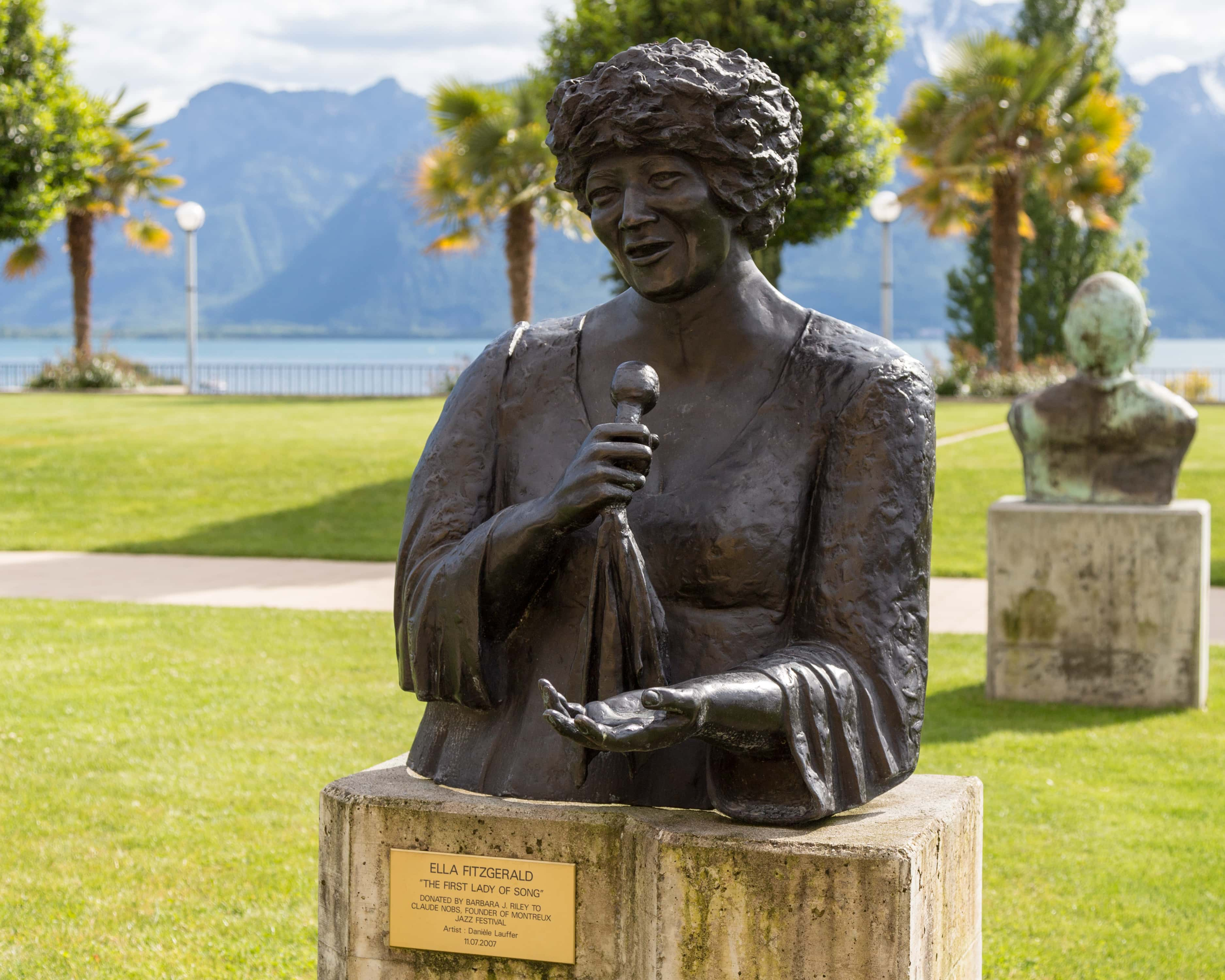 Wikimedia Commons, JoachimKohlerBremen
Wikimedia Commons, JoachimKohlerBremen
Sources: 1, 2, 3, 4, 5, 6, 7, 8, 9, 10, 11, 12, 13, 14, 15, 16, 17, 18

